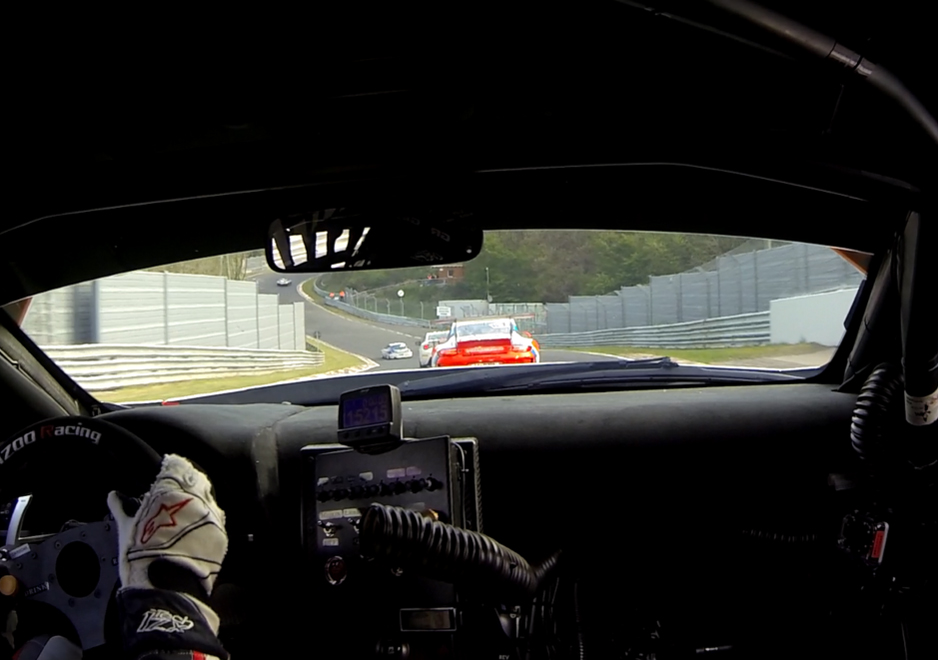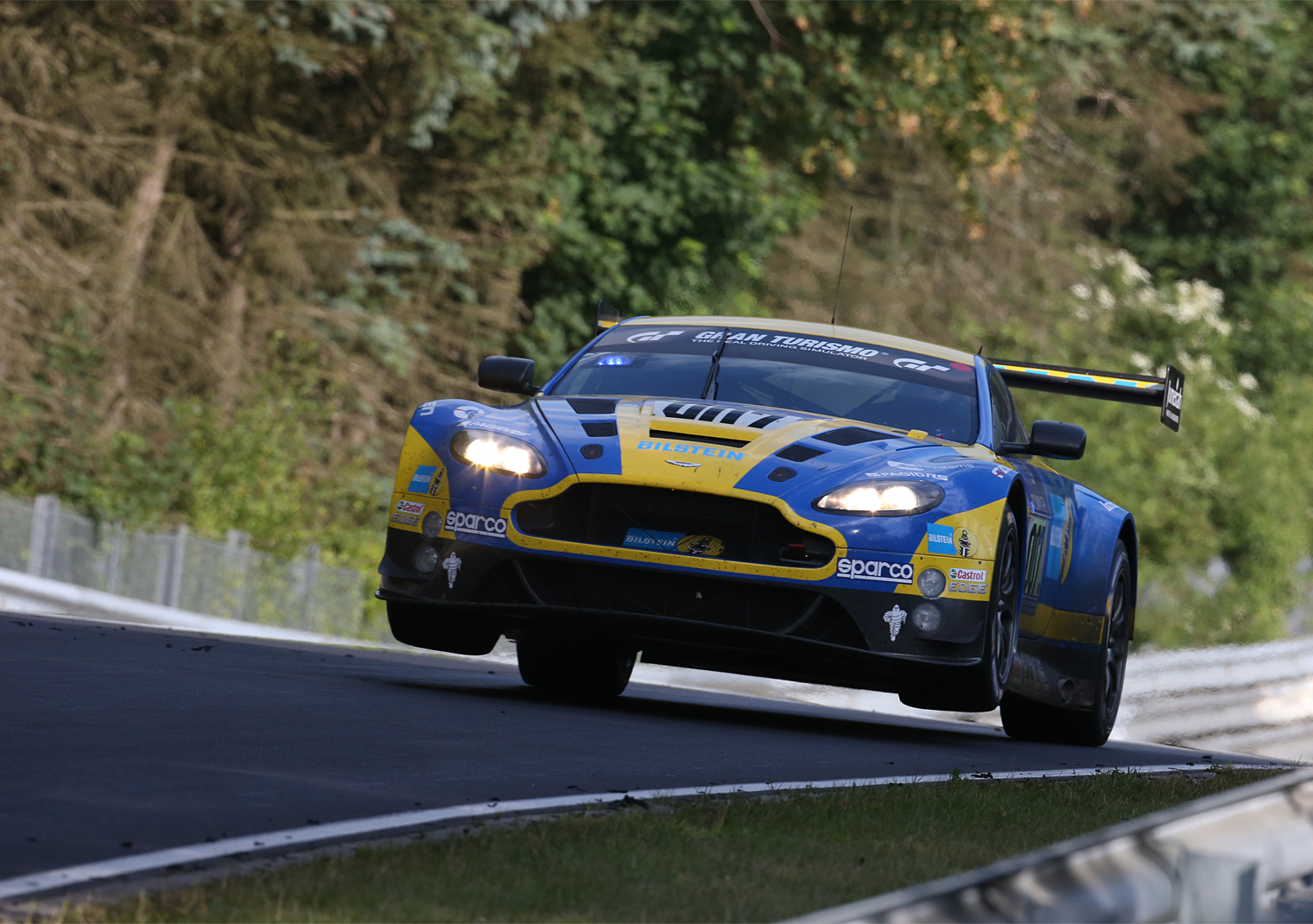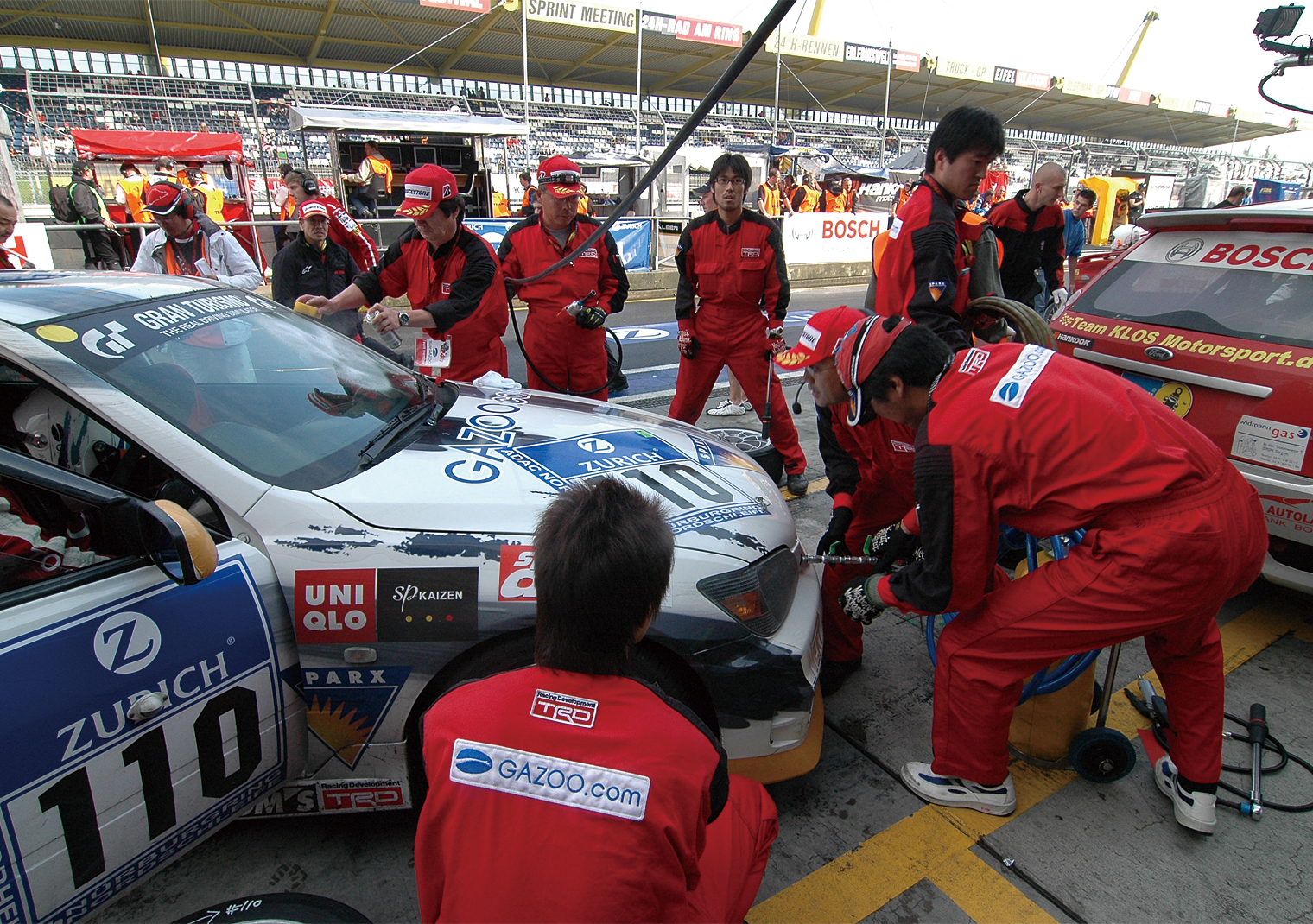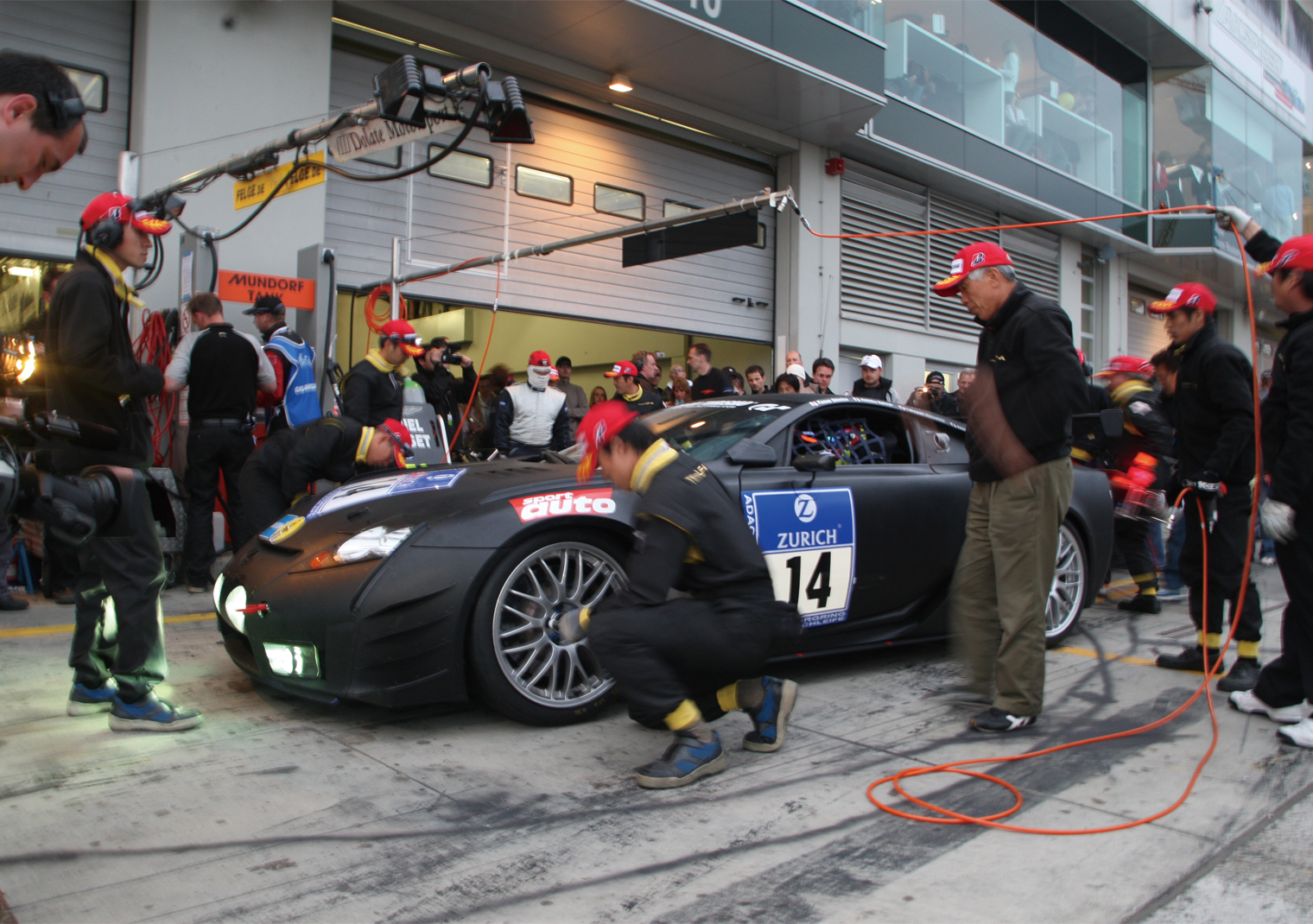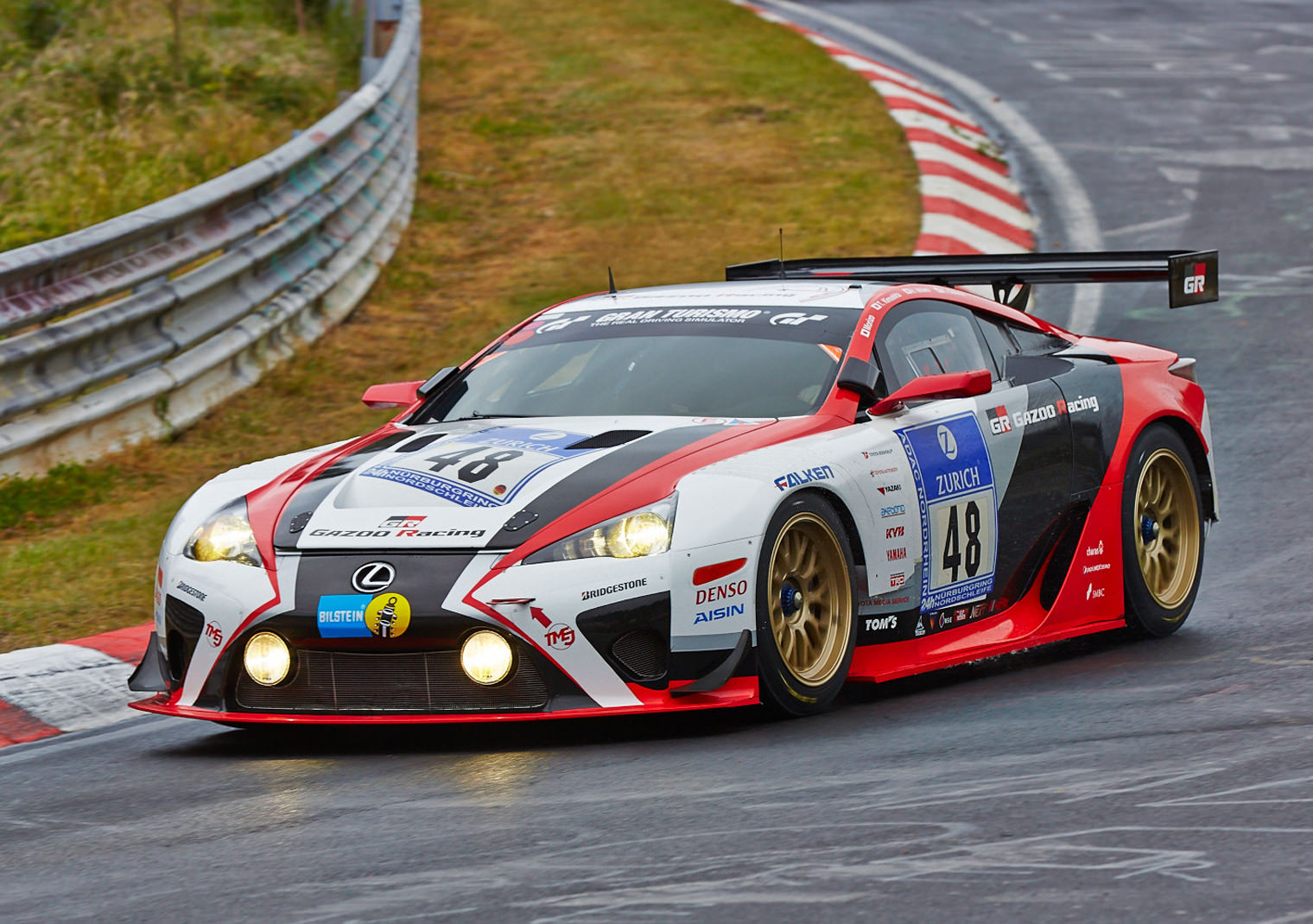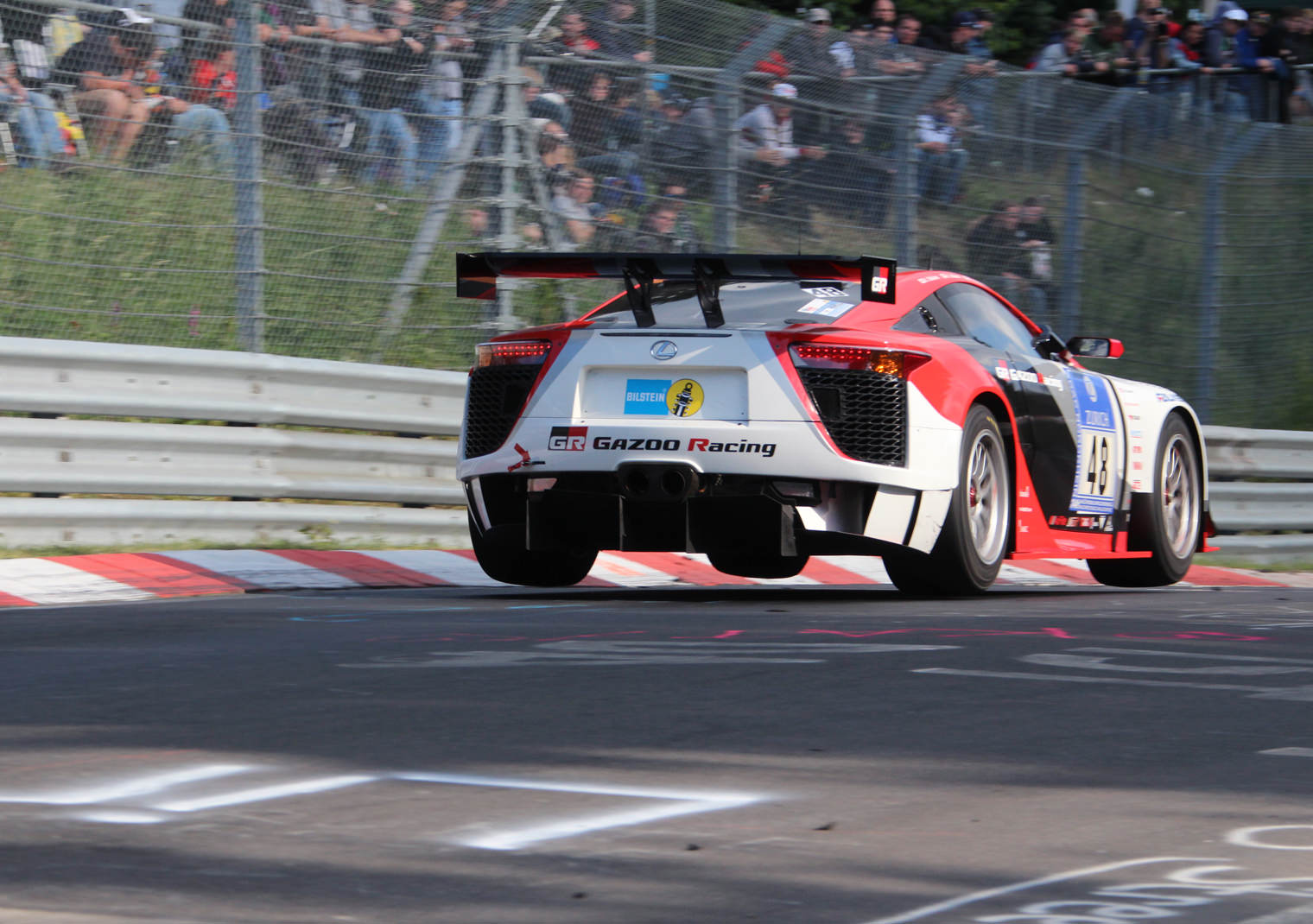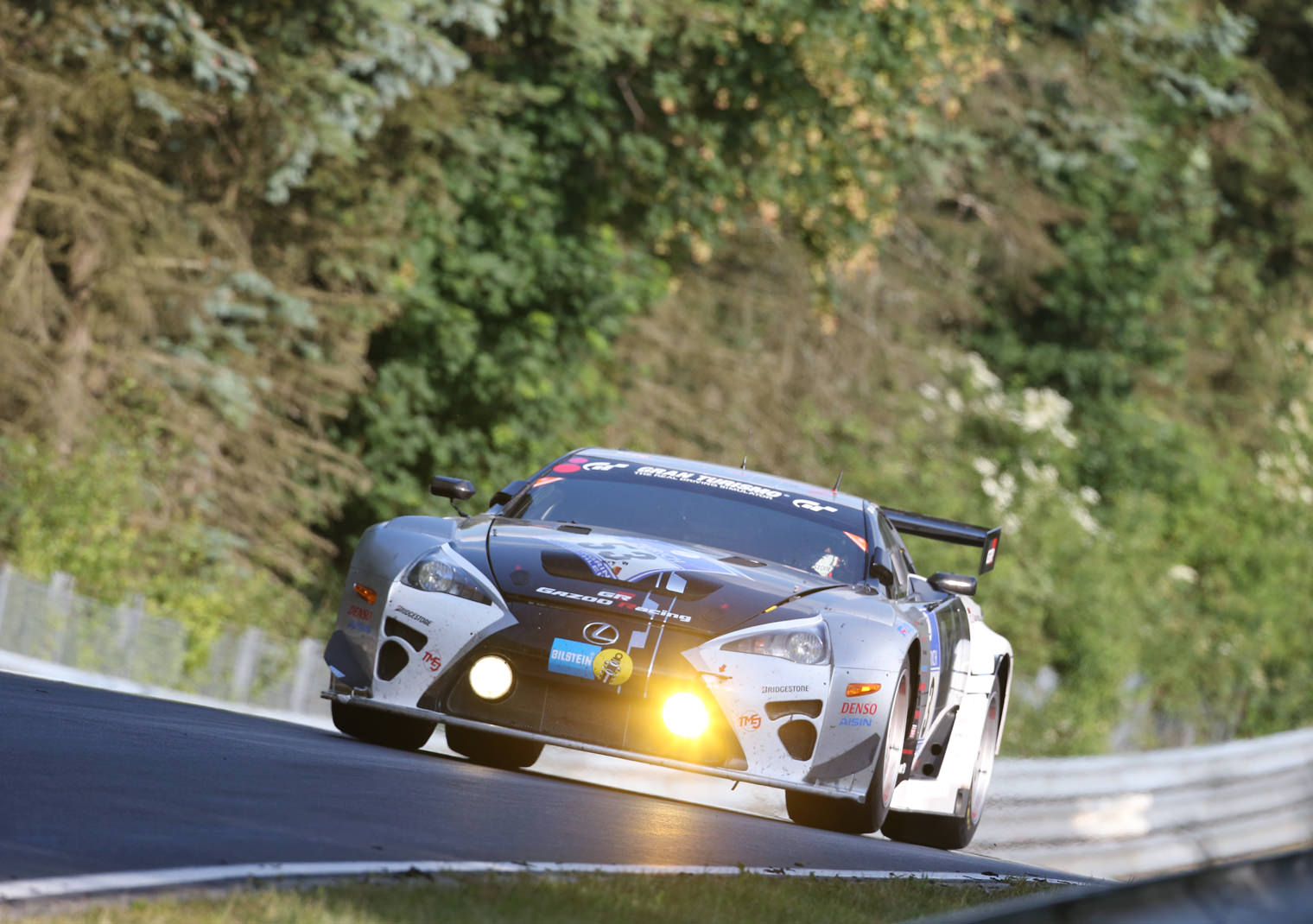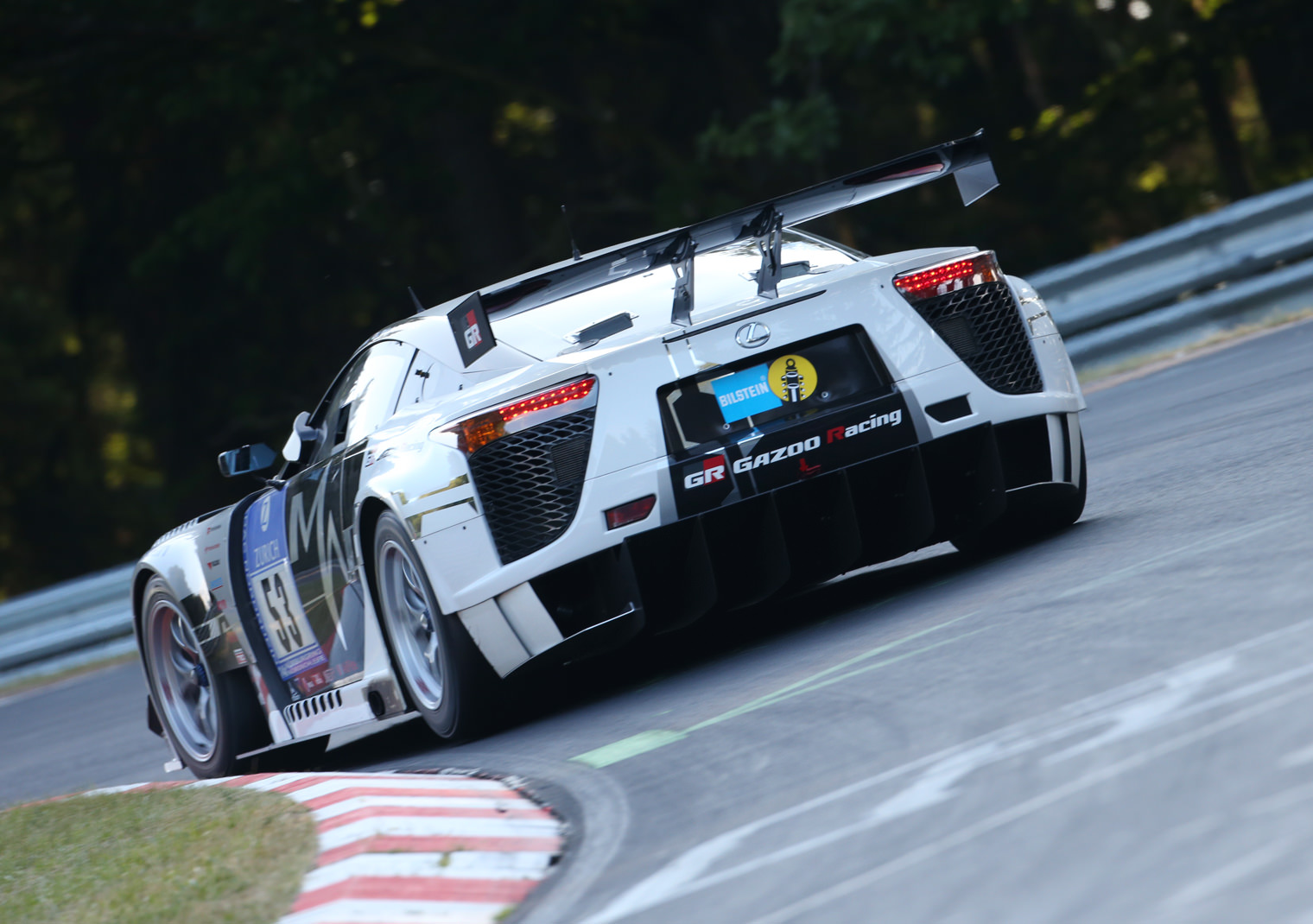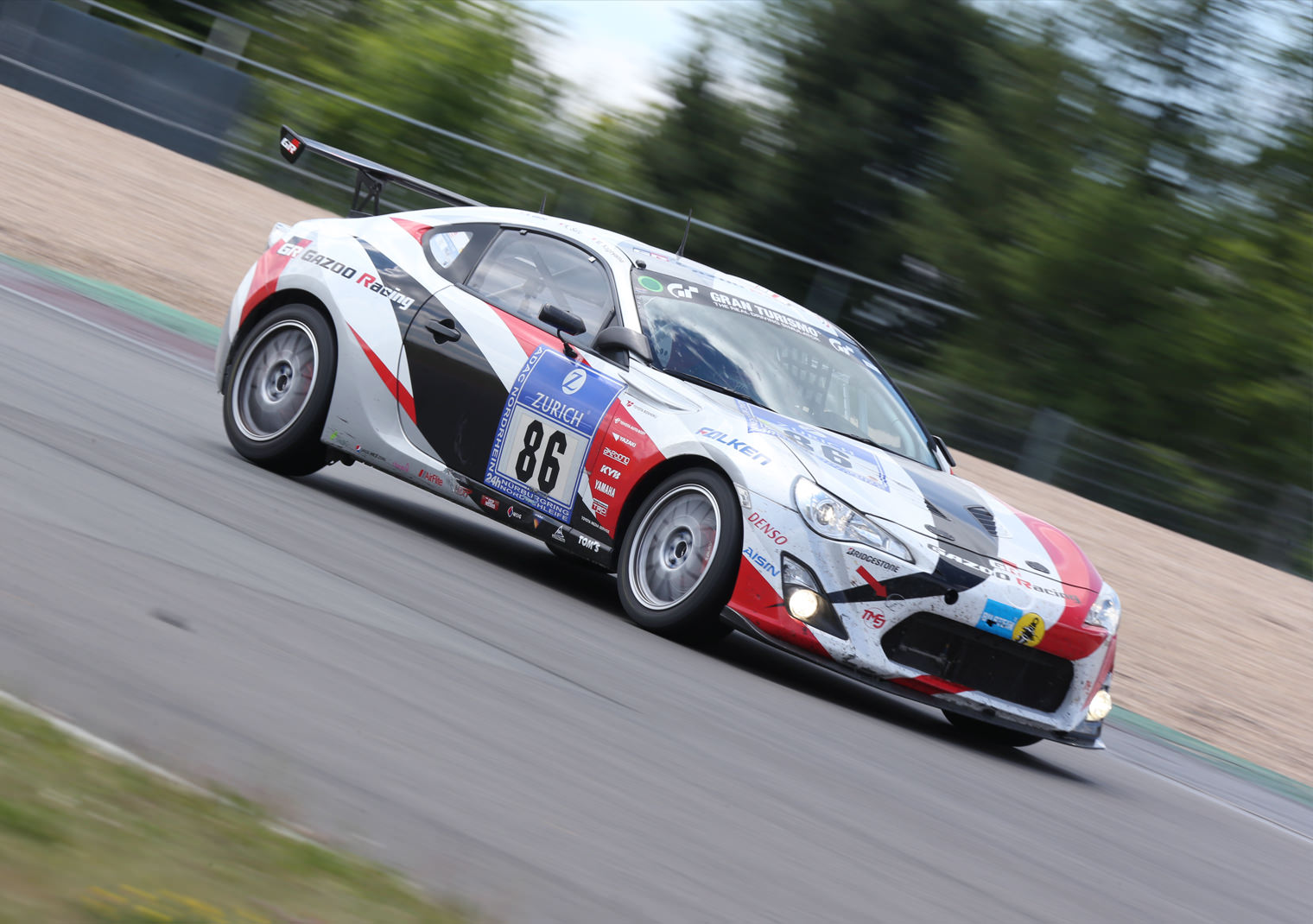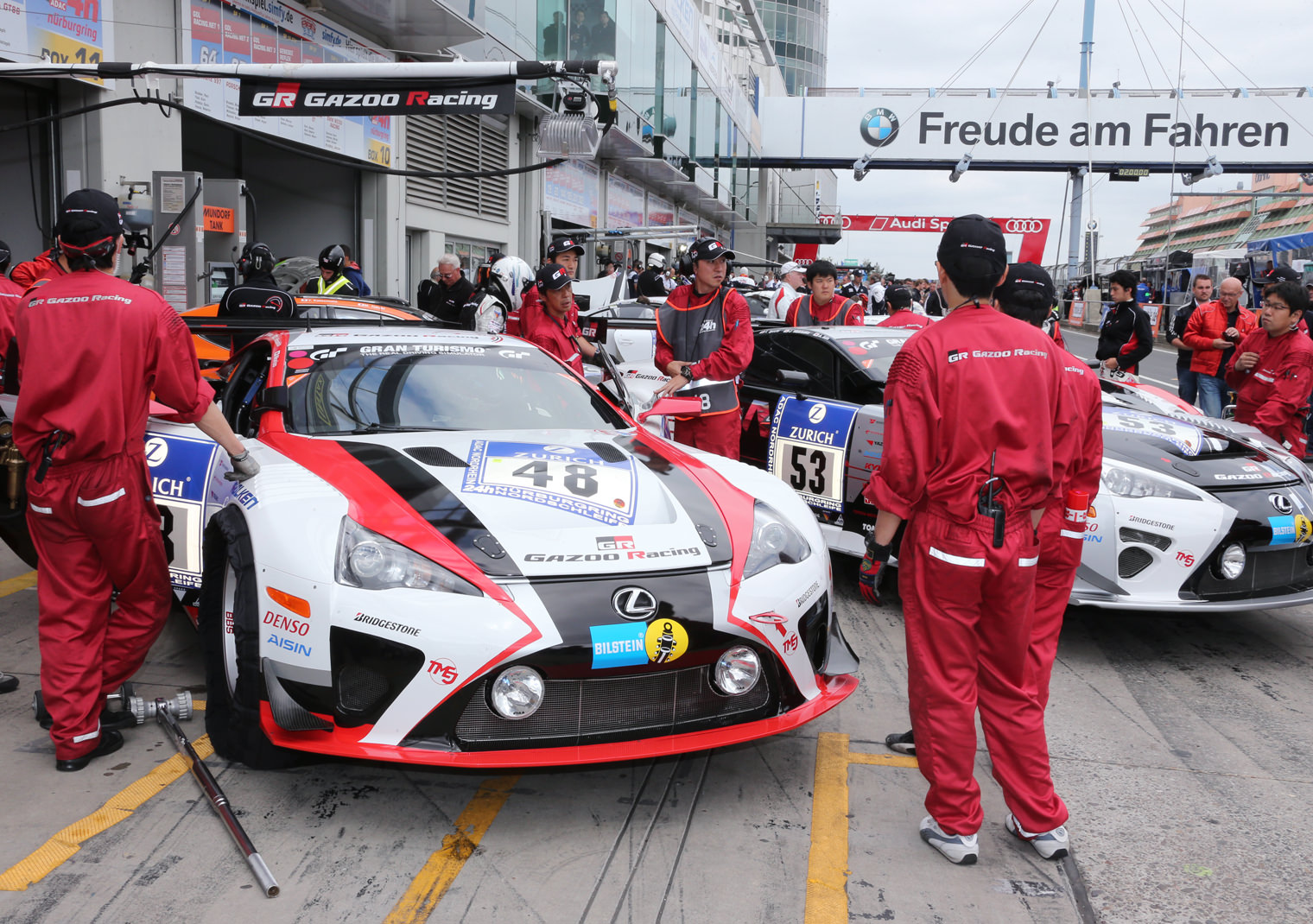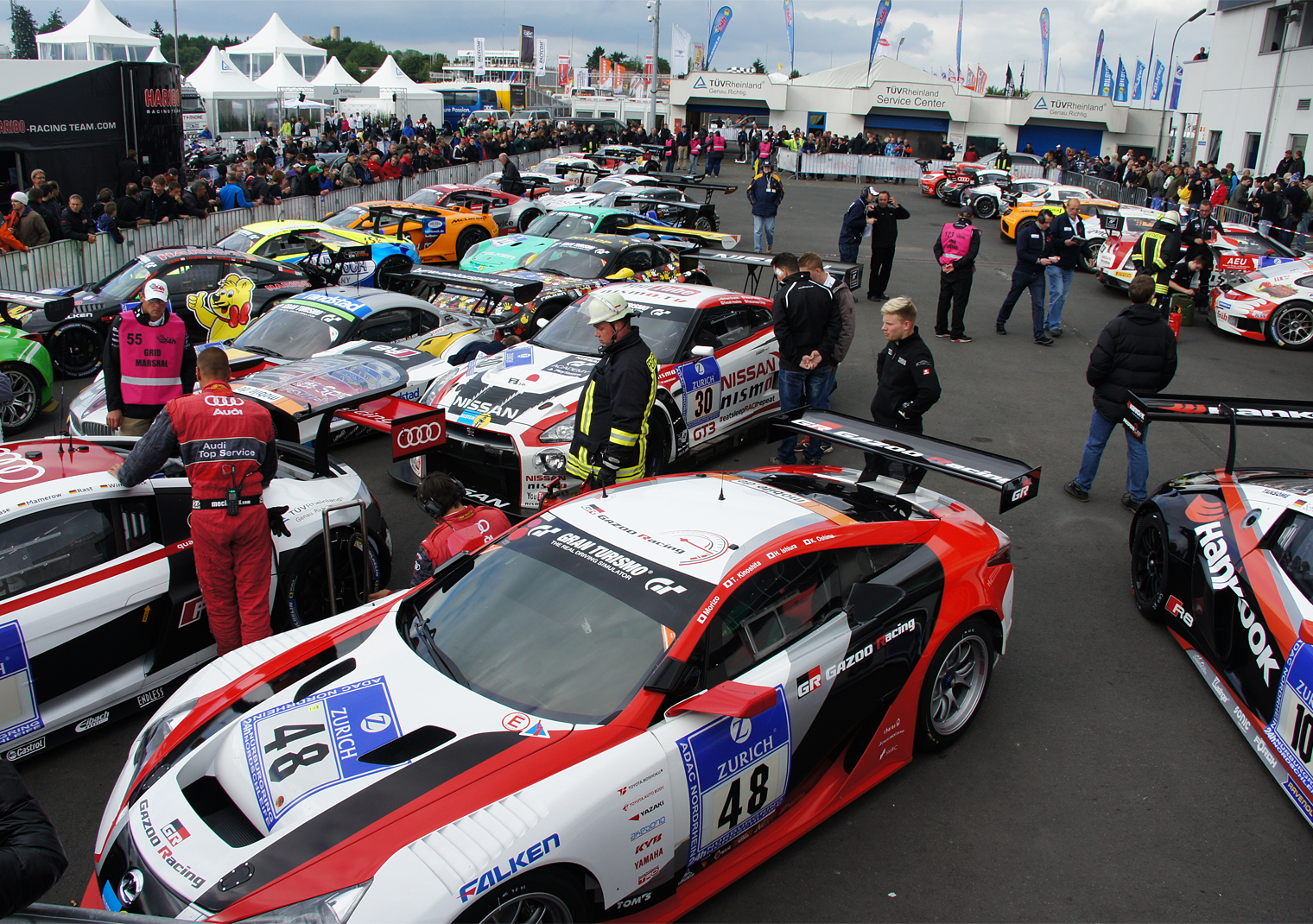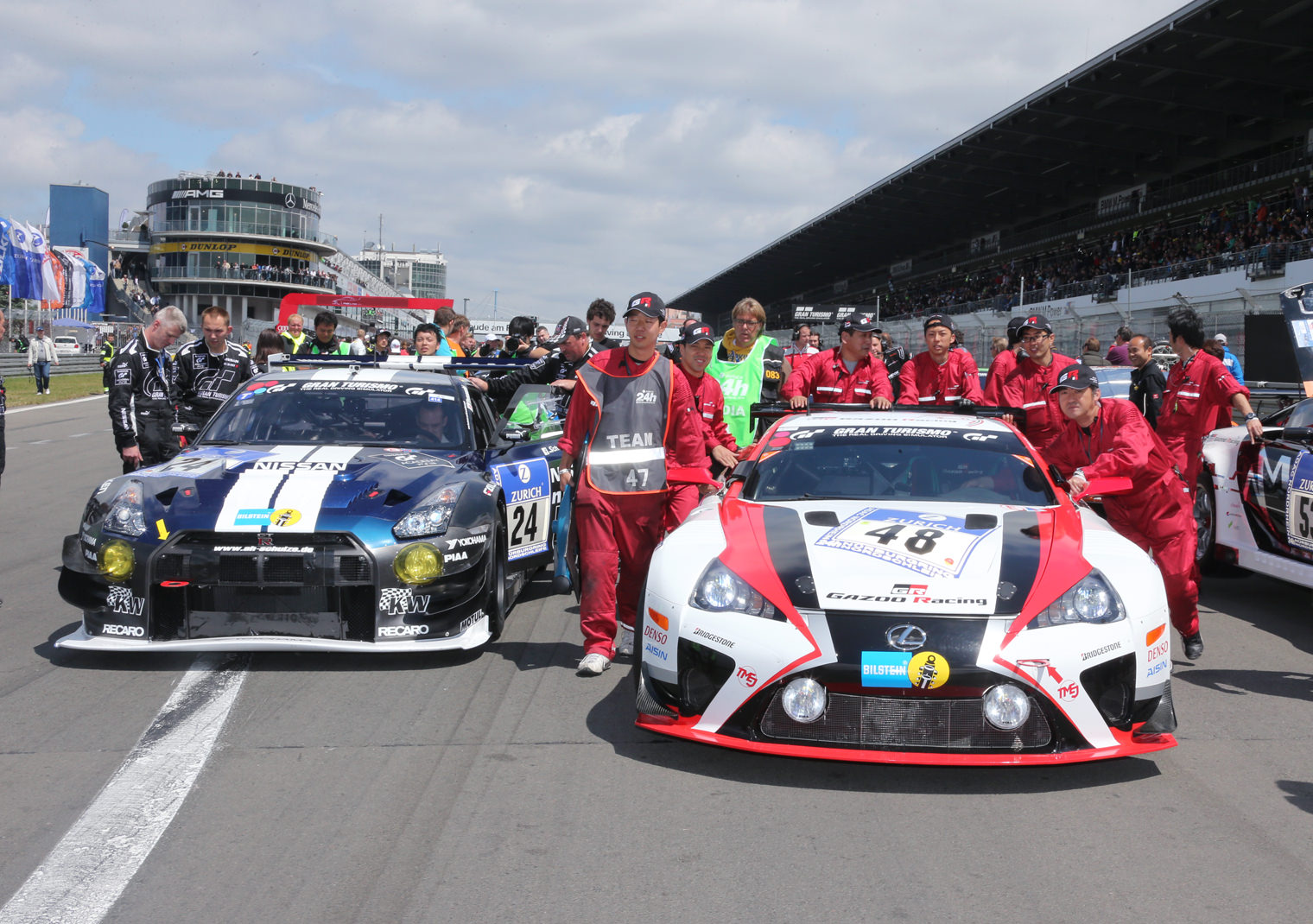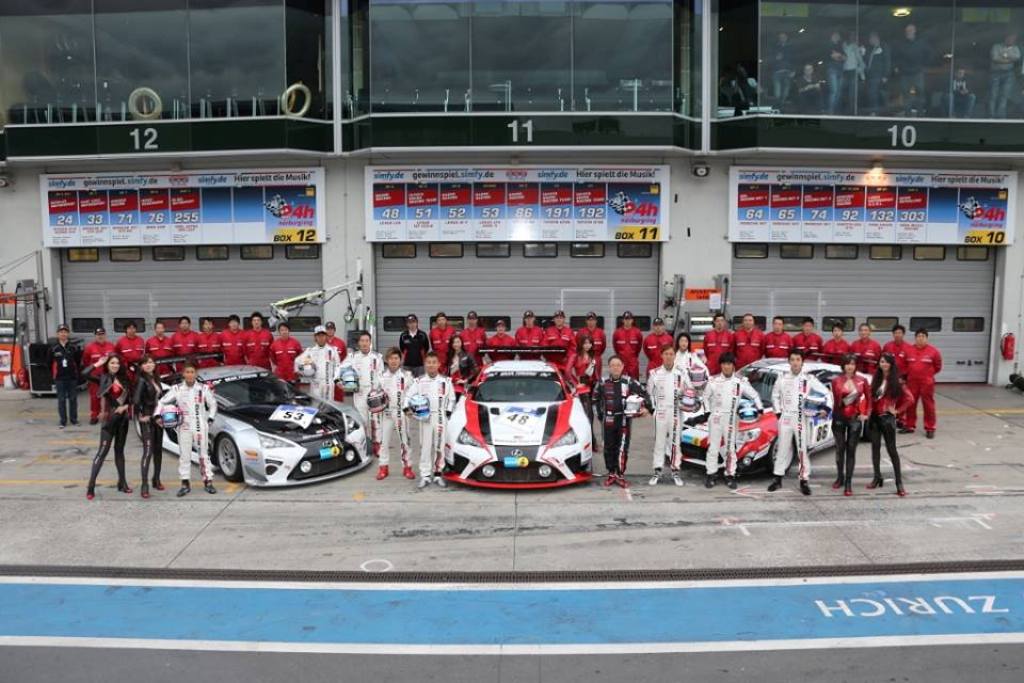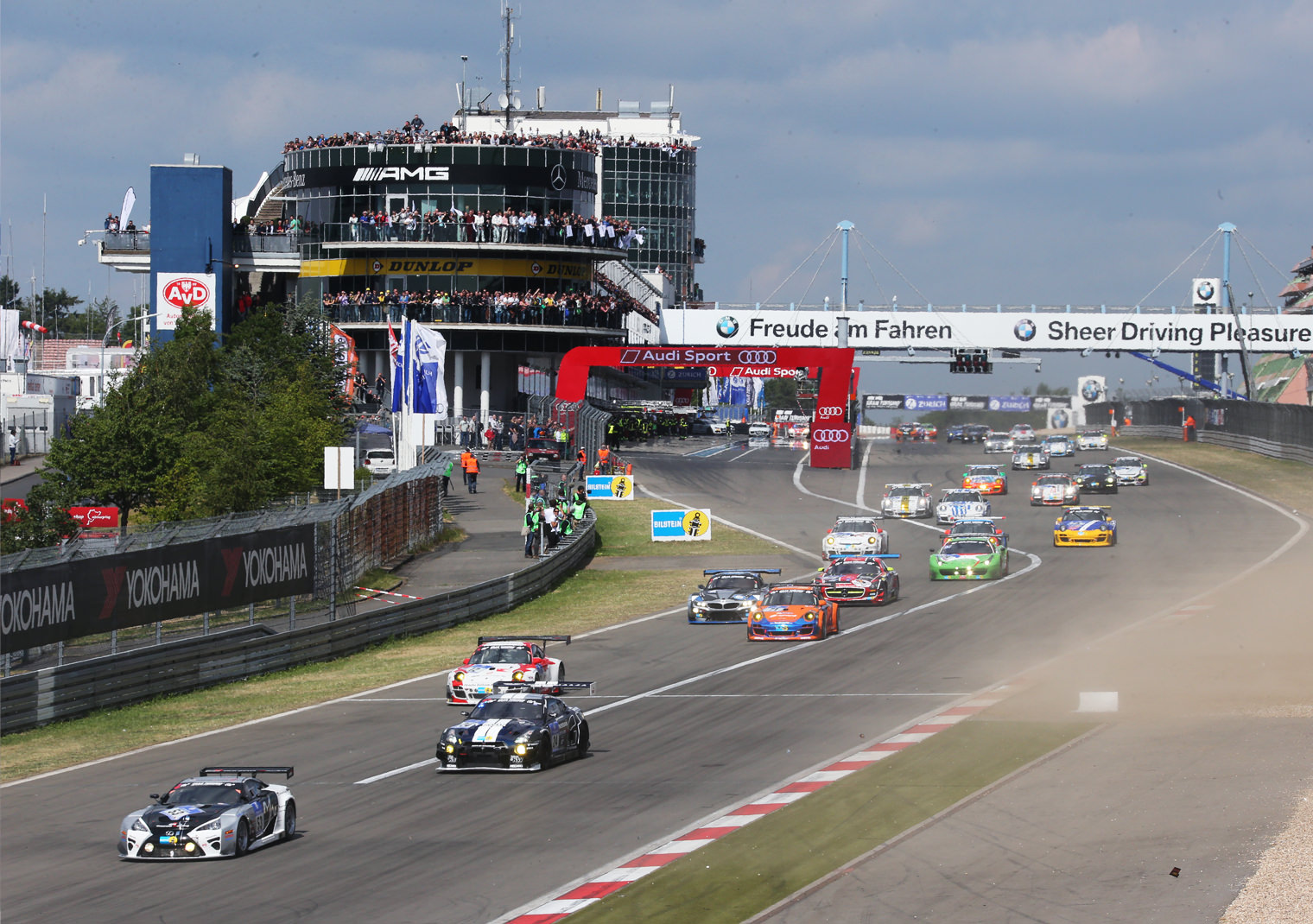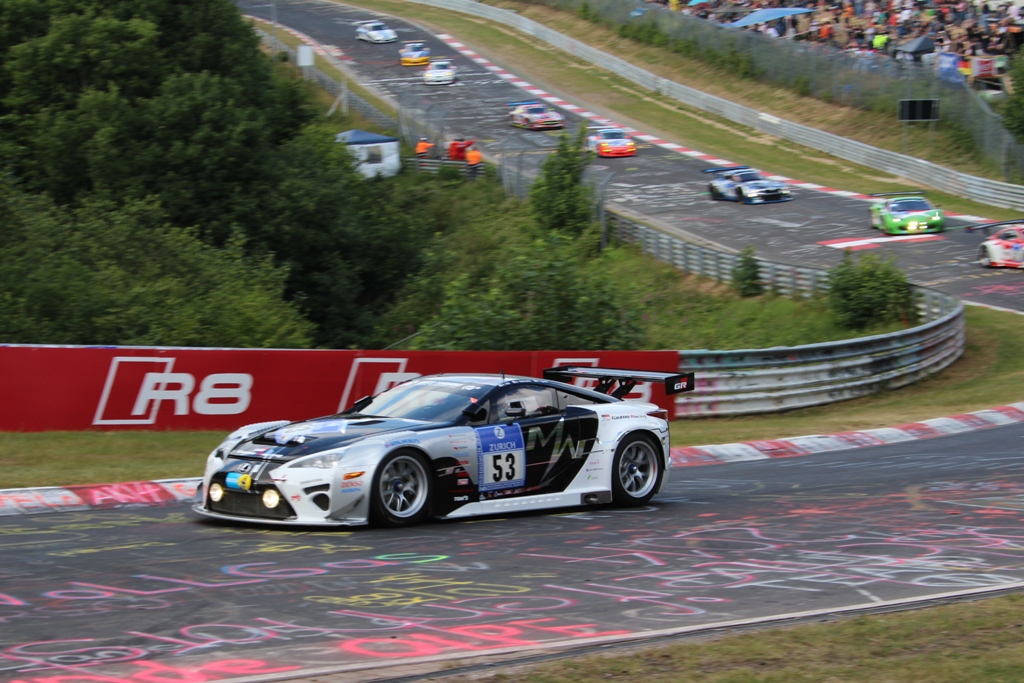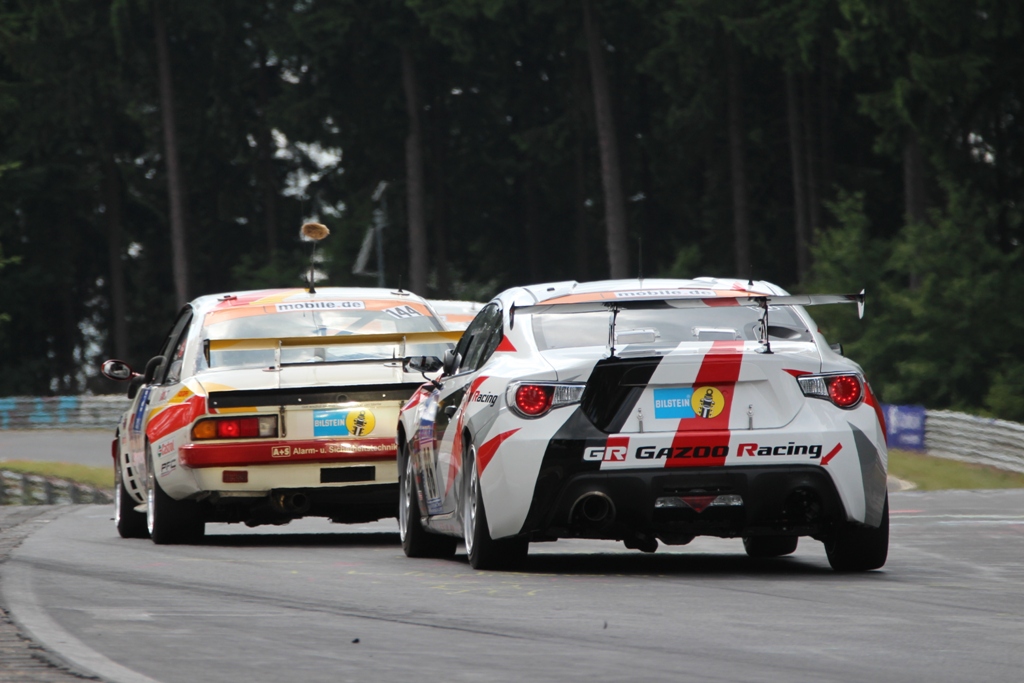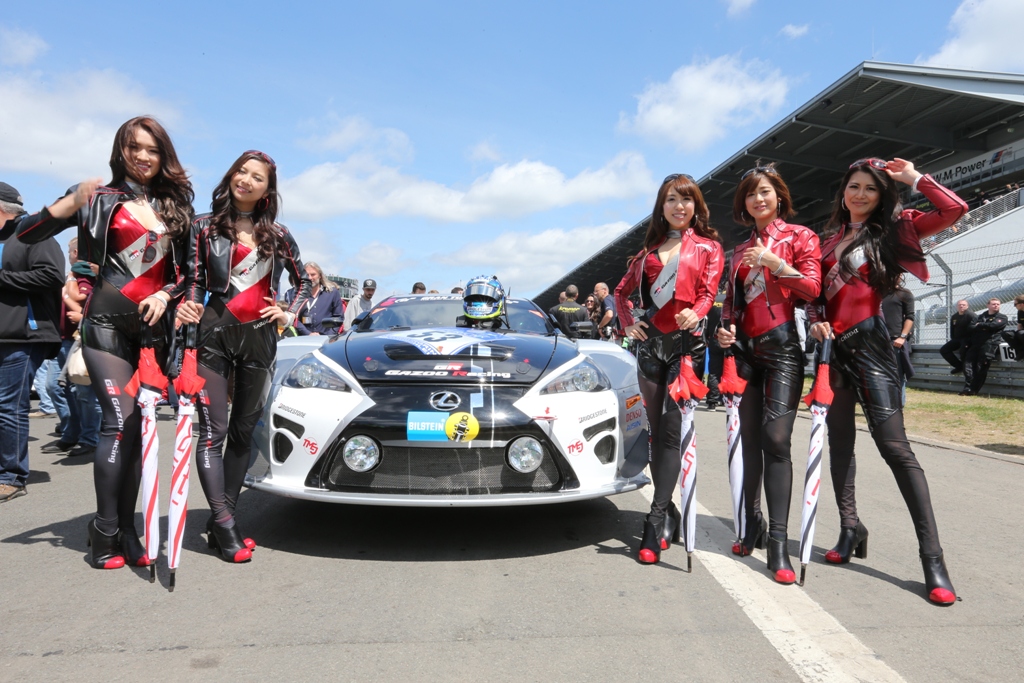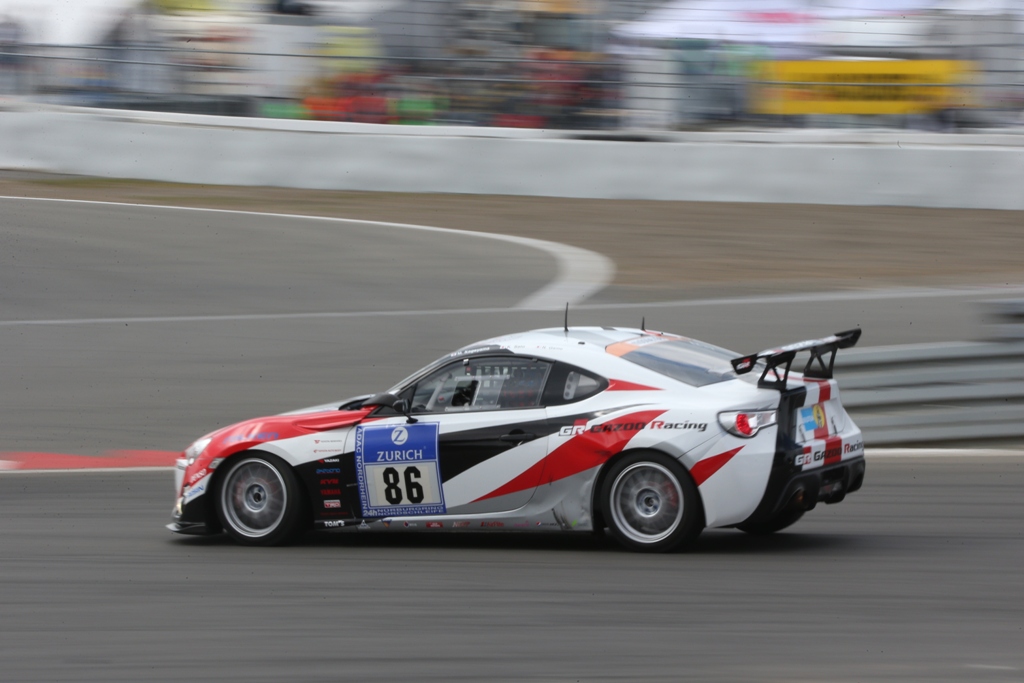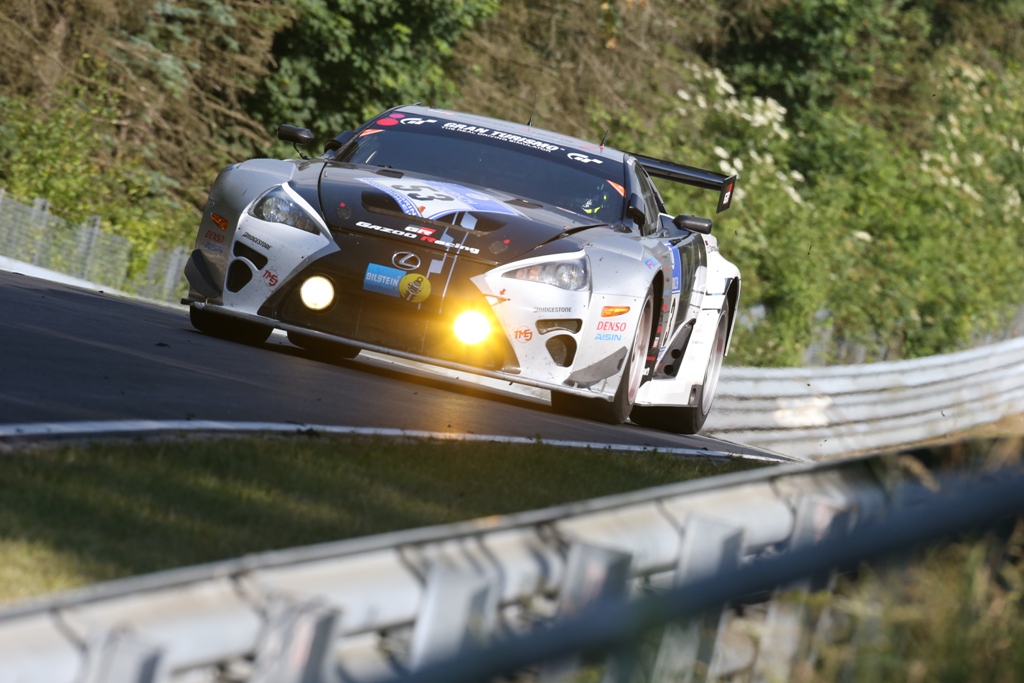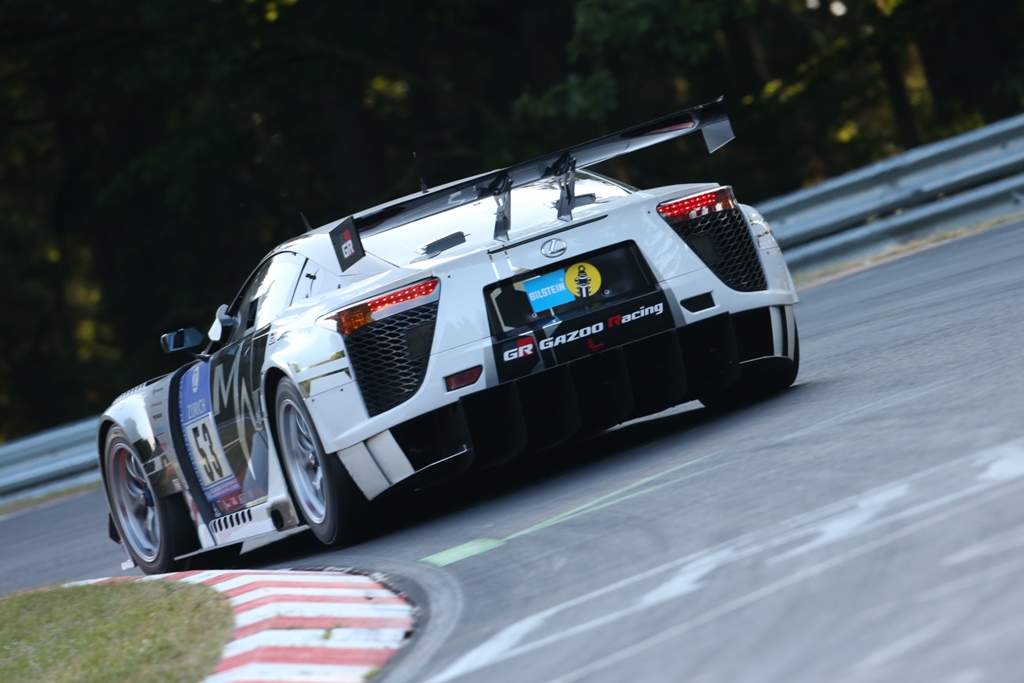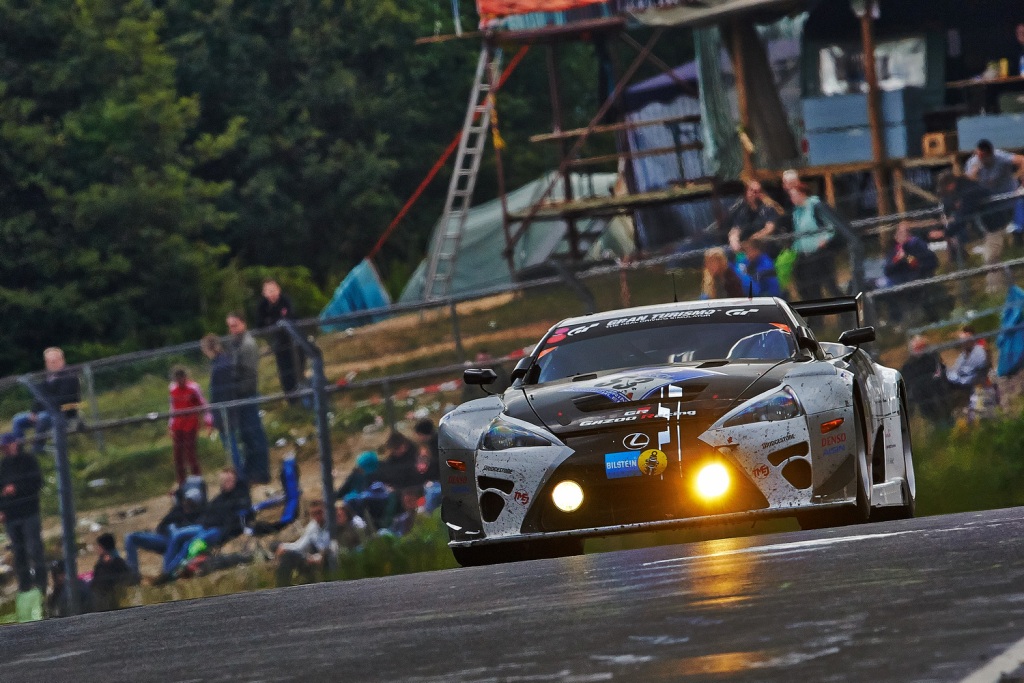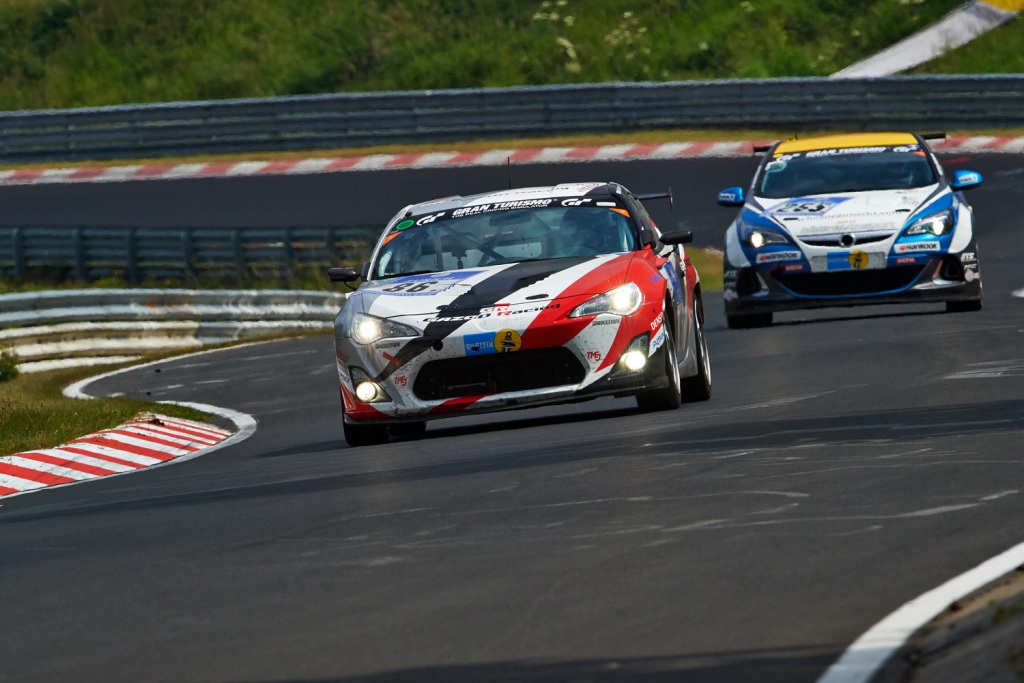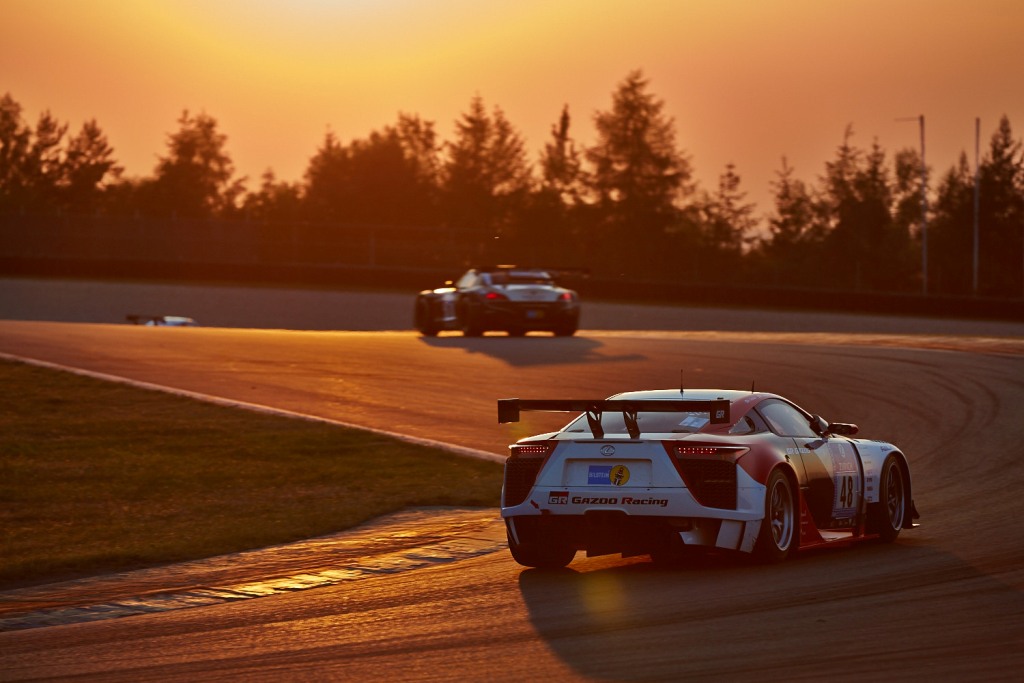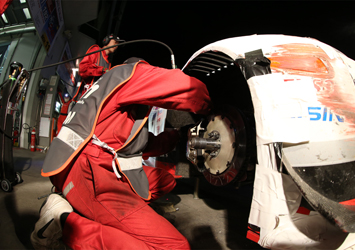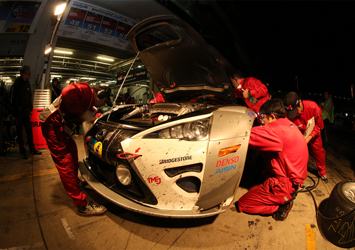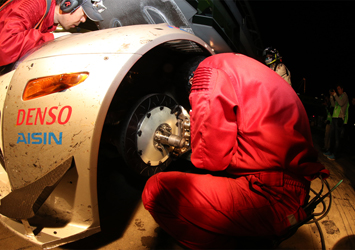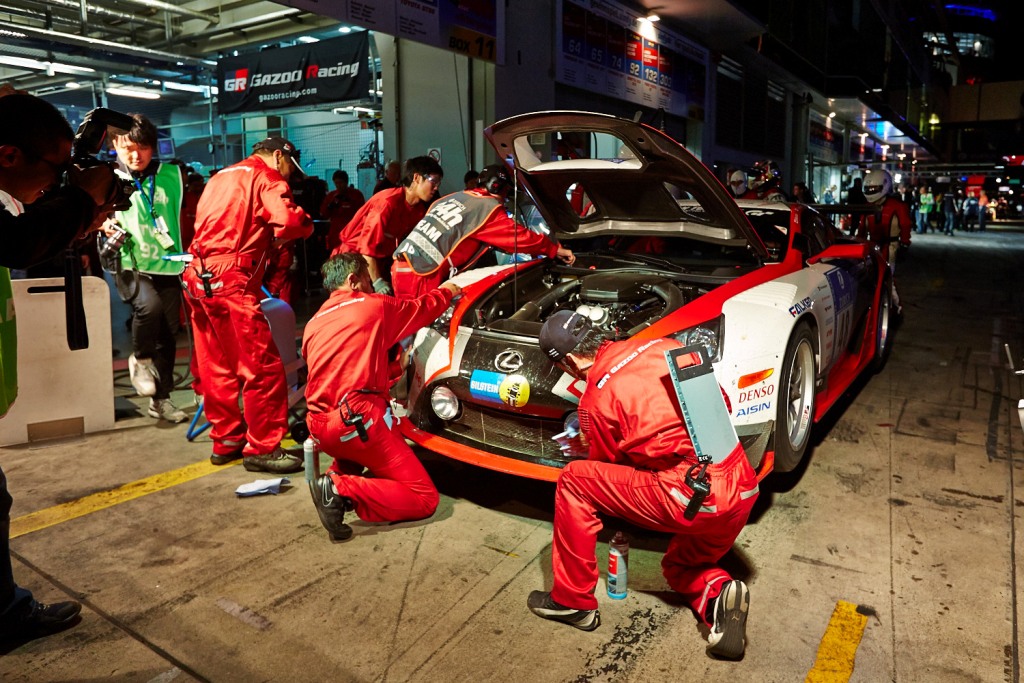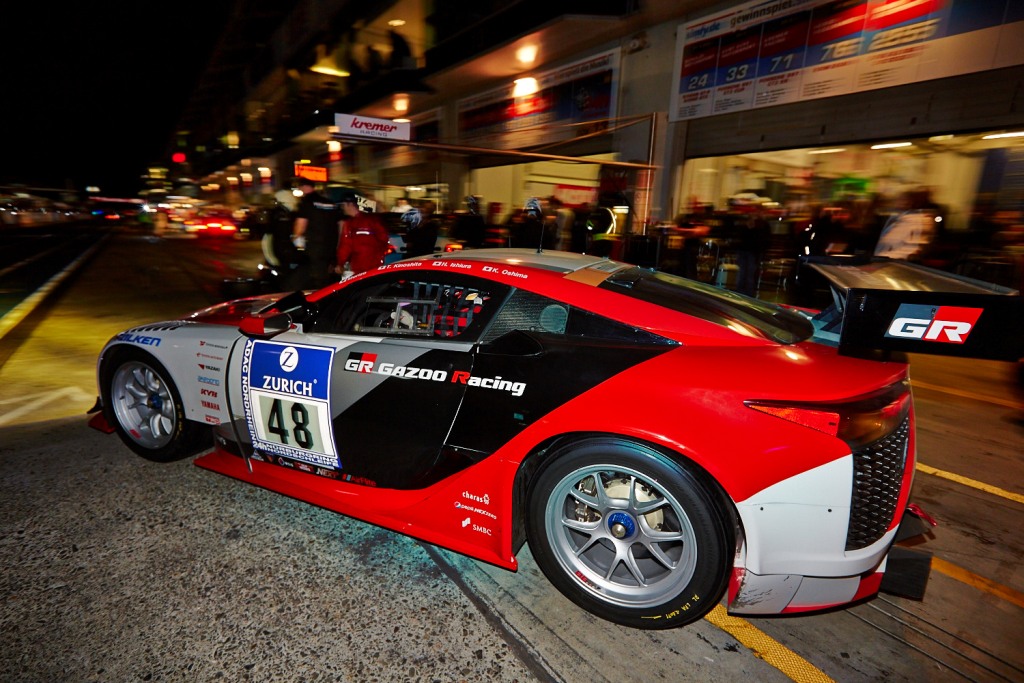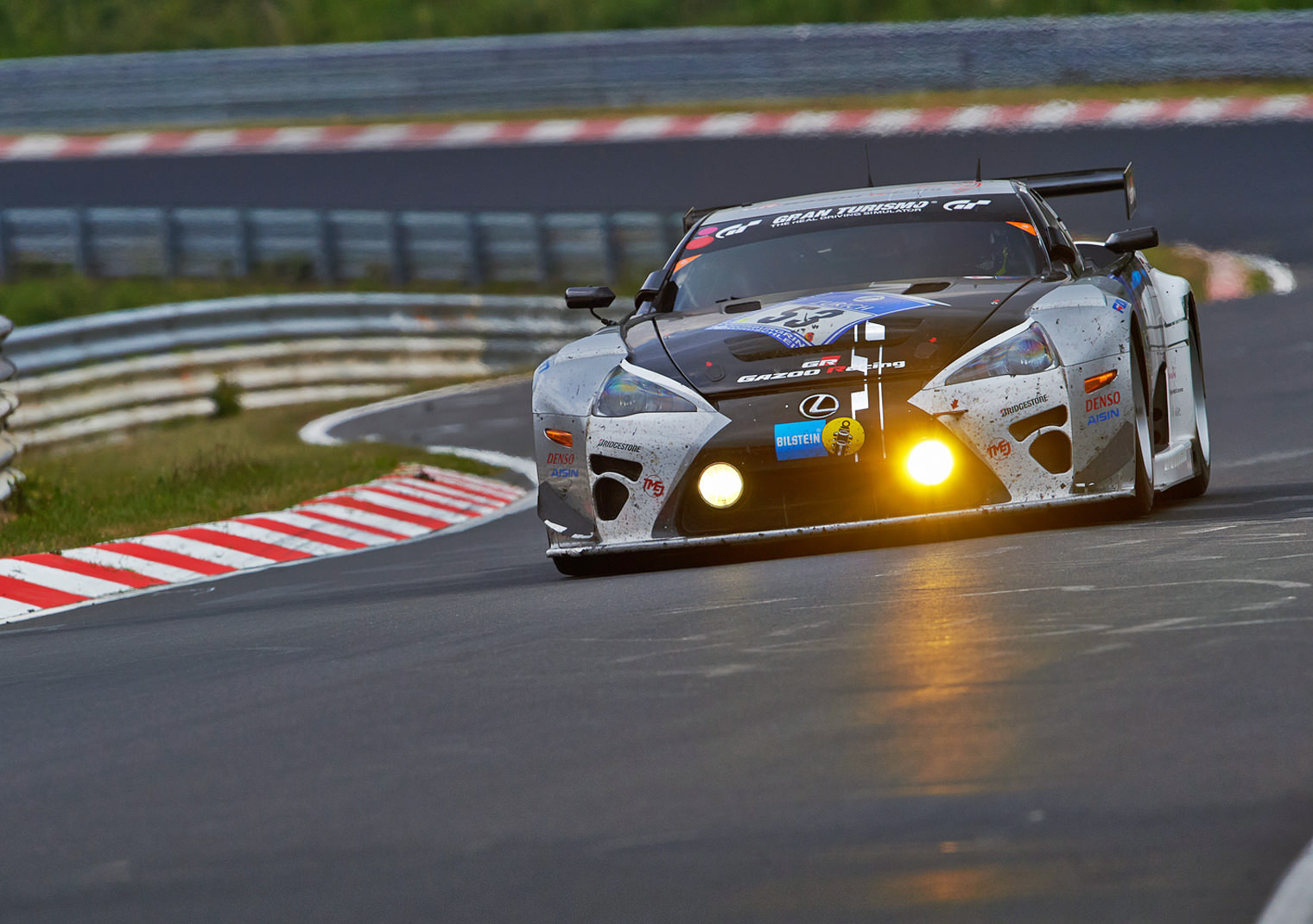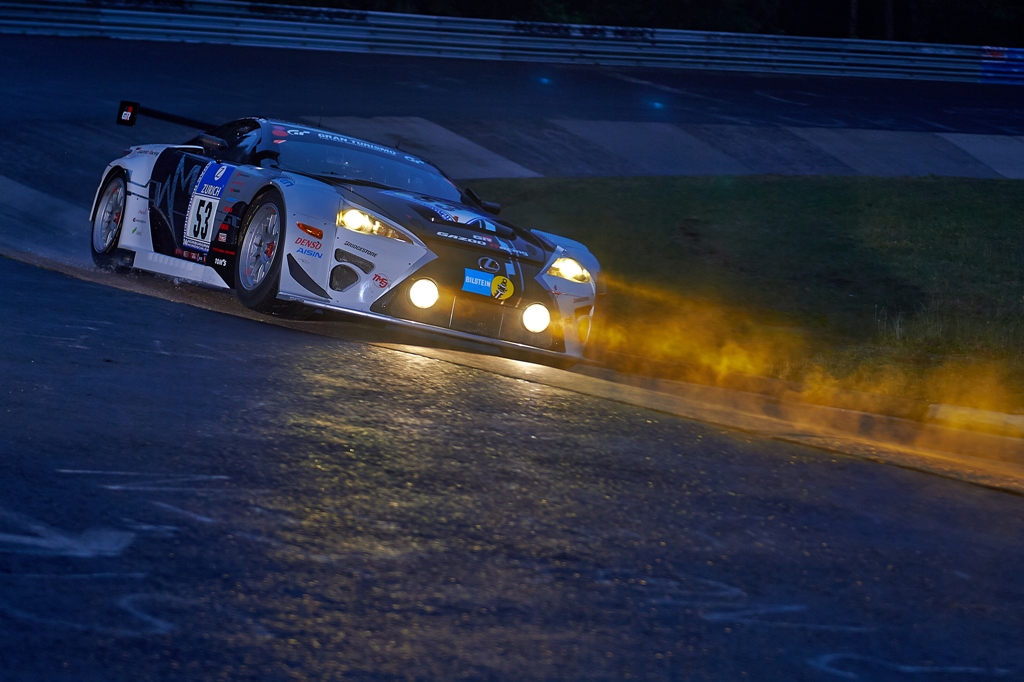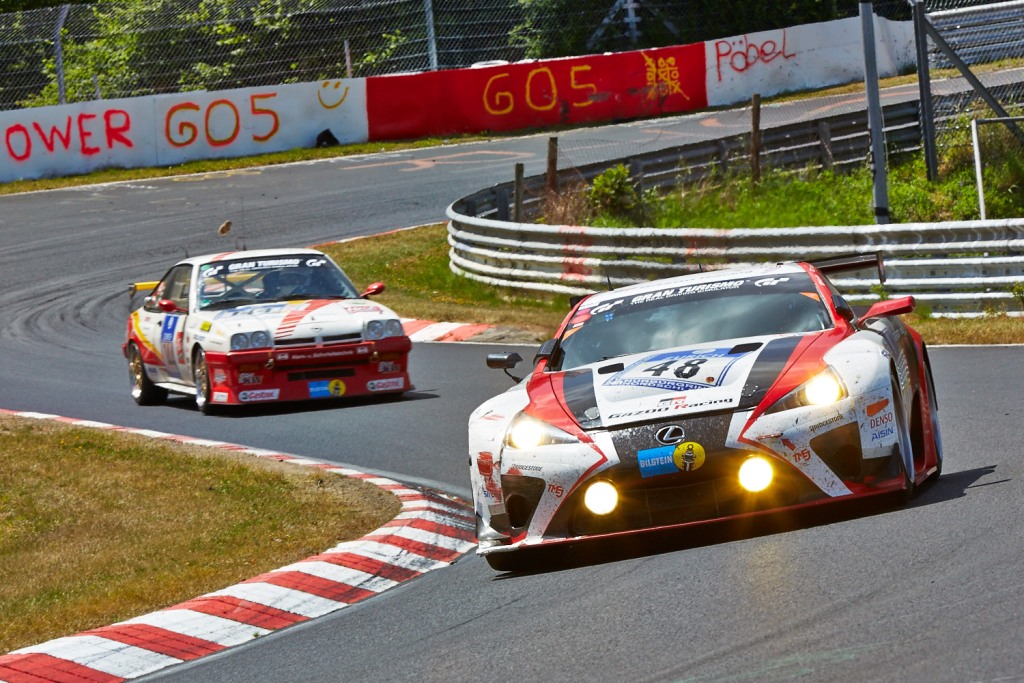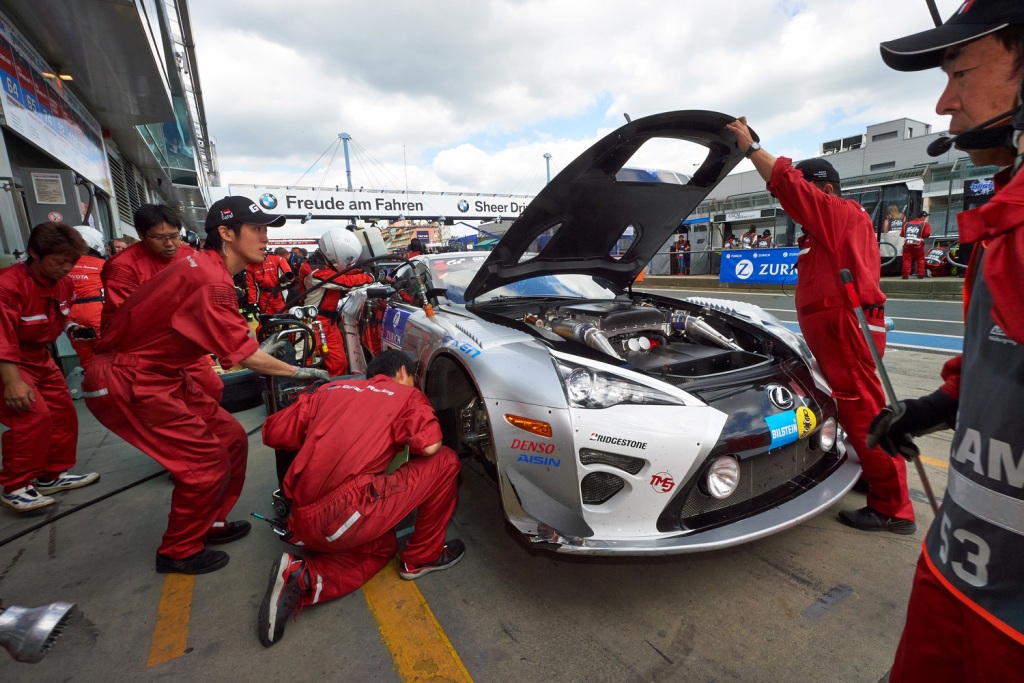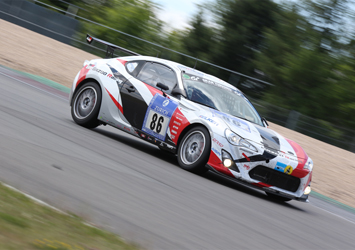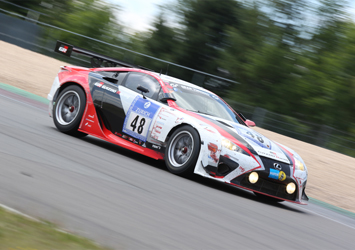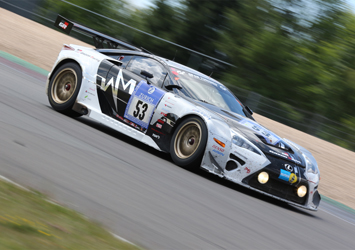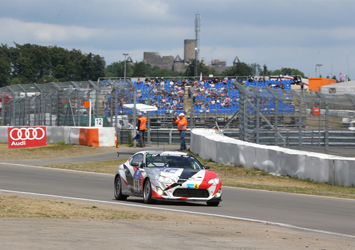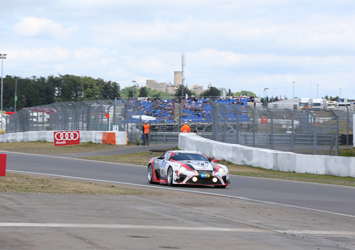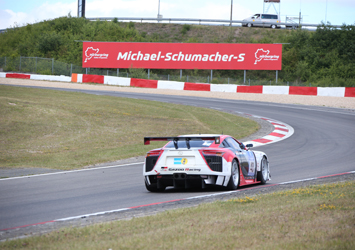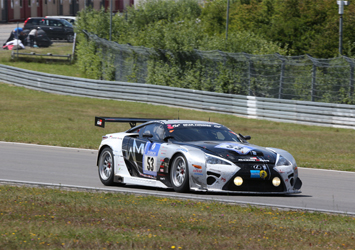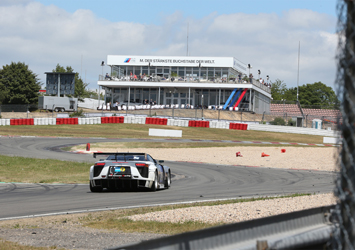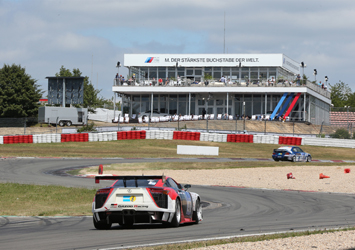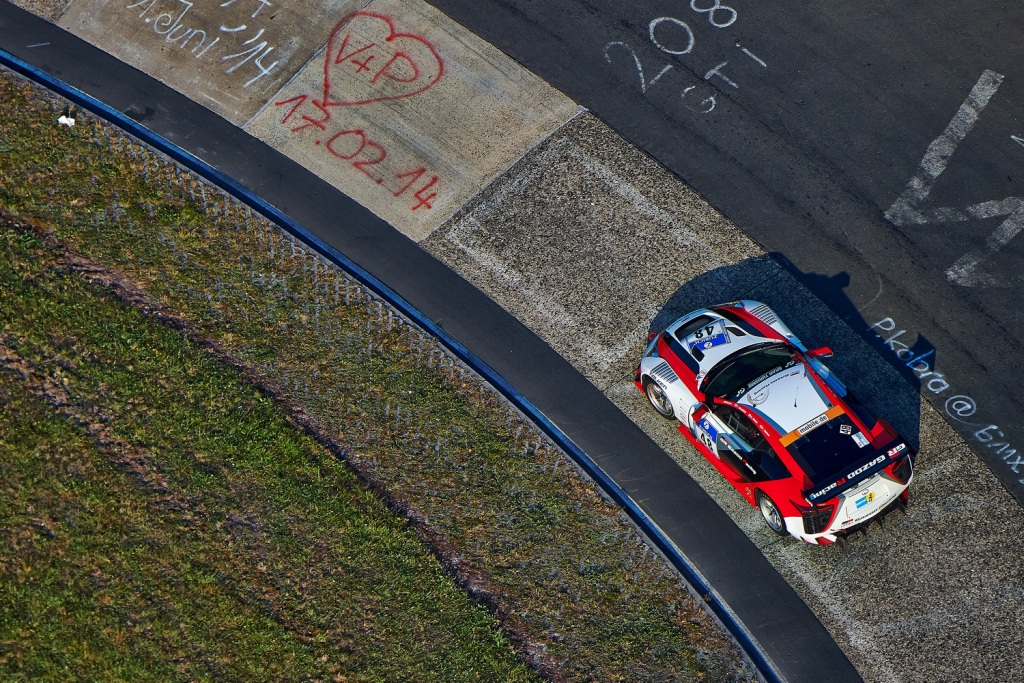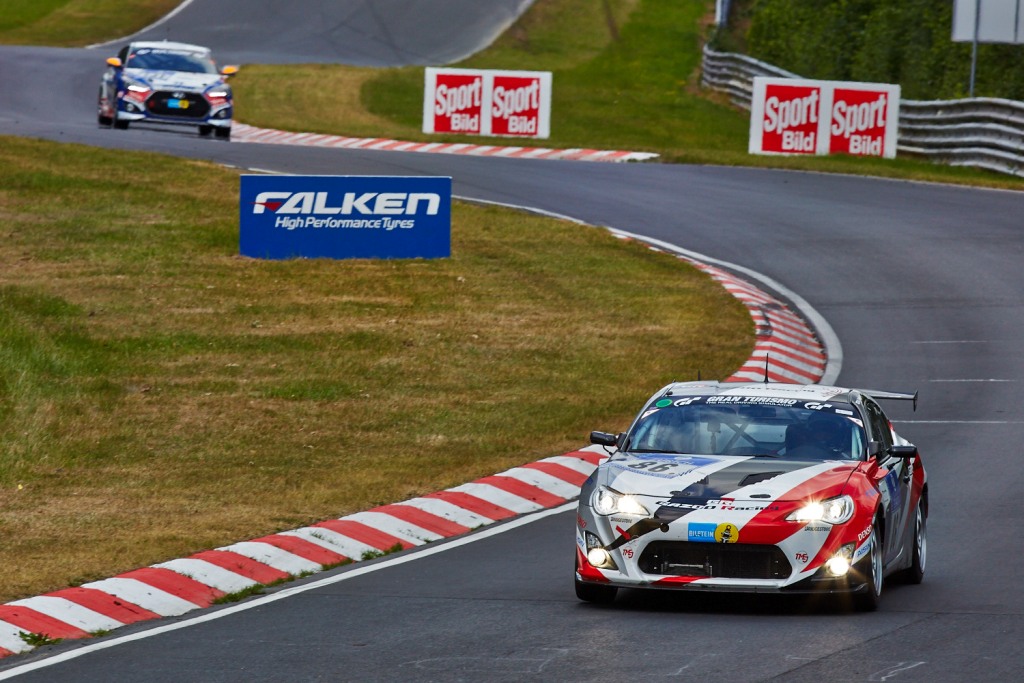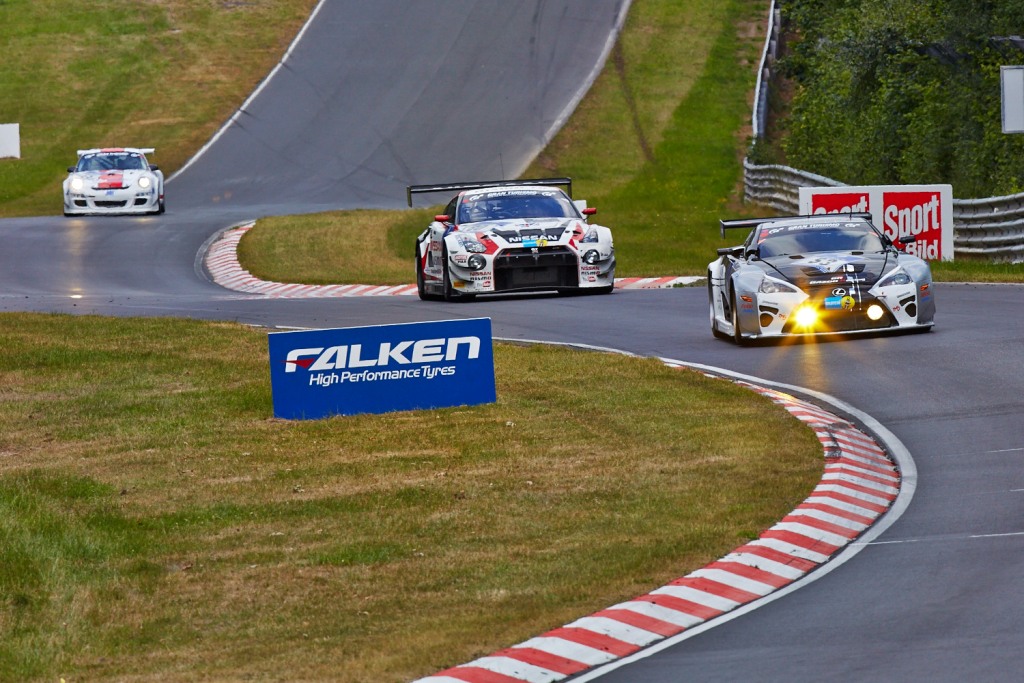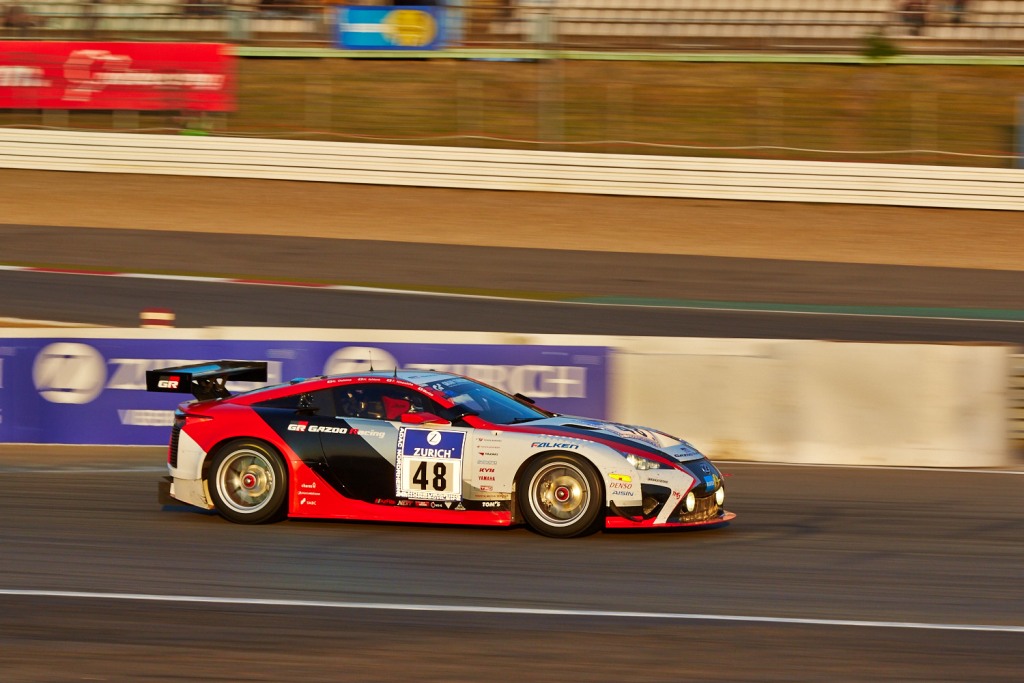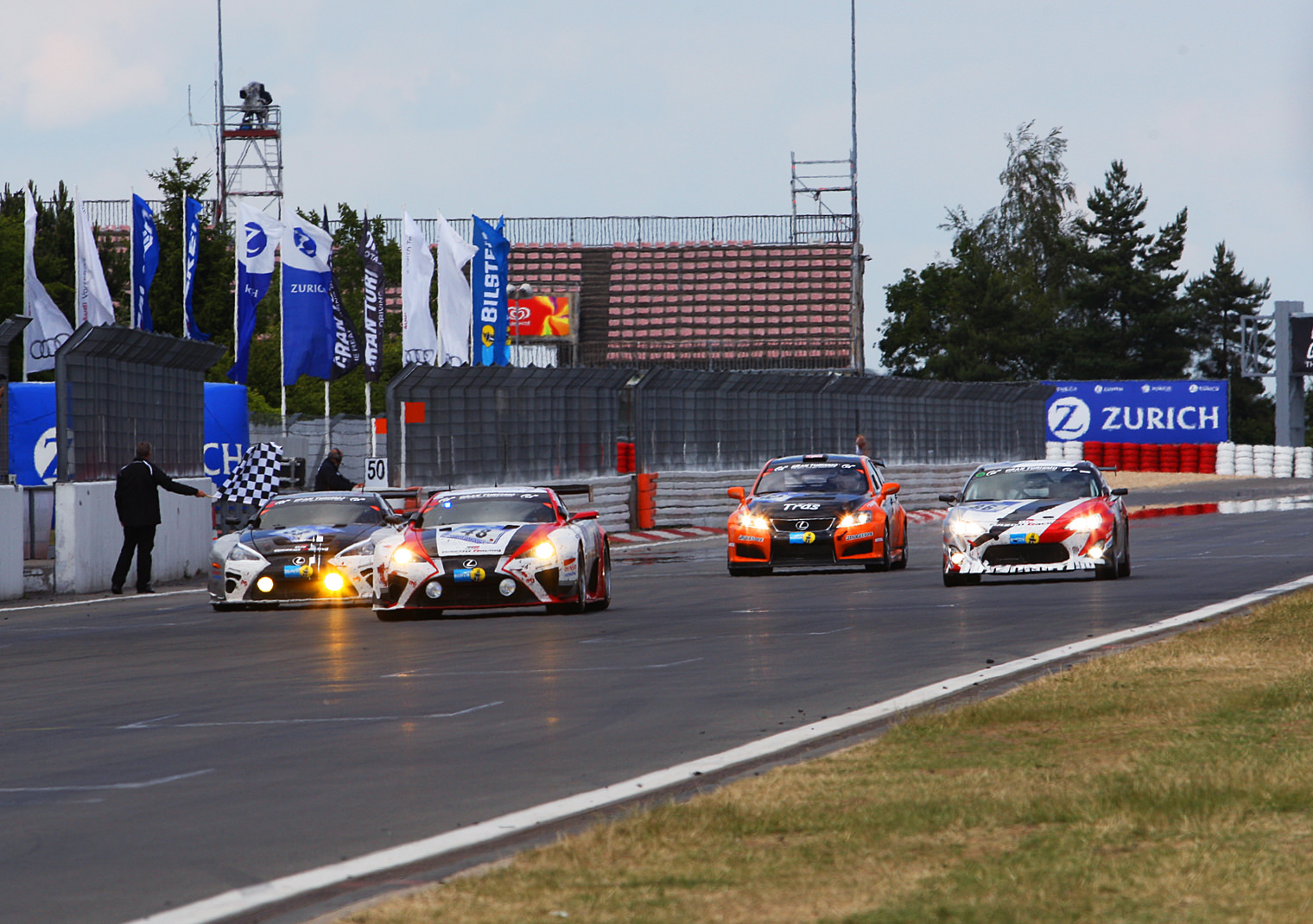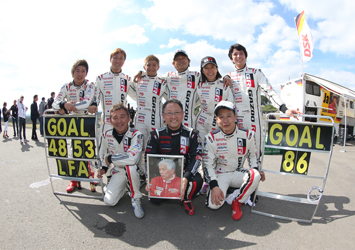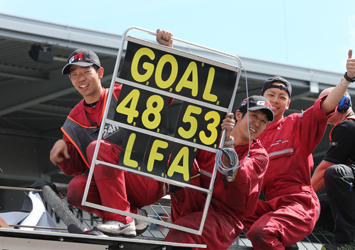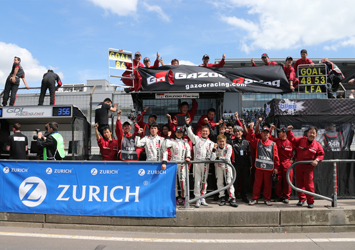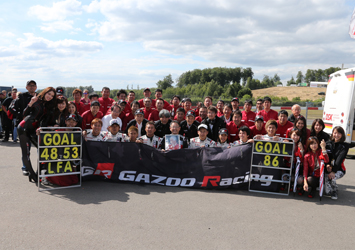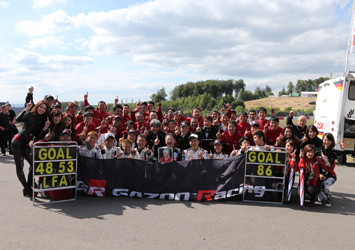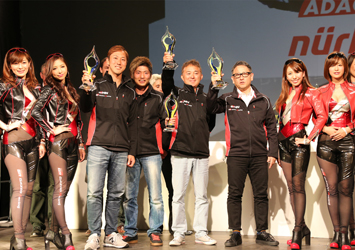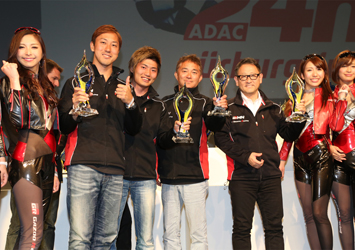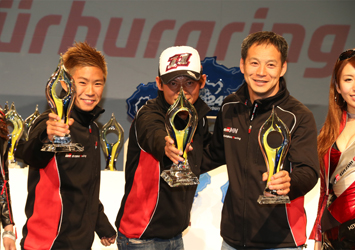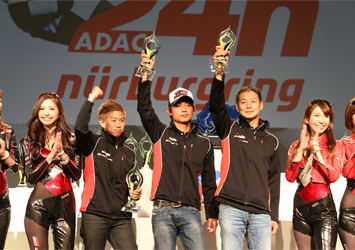Nürburgring, One of the World’s Toughest Courses
Located in Germany’s northwest, the Nürburgring complex has a long history. Its Nordschleife track, also known as the "Old Course," is an enormous circuit built at the suggestion of Adolf Hitler during the global recession that preceded the Second World War.
Even though it is a racing circuit, it was constructed on a layout similar to normal regional road networks in Europe, with a single lap covering an amazing 20.8-kilometer and featuring a 300-meter-change in altitude and more than 170 corners of varying severity, creating a wide range of driving speeds through low-speed and very high-speed sections. With a continuously undulating, dusty and slippery track surface, little width and almost no escape zone, it is known as one of the world’s toughest courses.
Since overall vehicle performance is easily reflected in lap times, most of the major automobile manufacturers come here for testing. As for Japanese automobile manufacturers, Toyota in particular has been coming here for years for vehicle development, with the Toyota Supra, Altezza and 86, and the Lexus LFA being famous sports models refined at the Nürburgring complex.
The Nürburgring complex is stage to the 24 Hours Nürburgring endurance race, officially titled the ADAC Zurich 24h-Rennen, which was held for the 42nd time this year. Over 170 machines competed over a combined 25-kilometer course, comprising the 5.1-kilometer Formula 1 Grand Prix track and the 20.8-kilometer Nordschleife track.
GAZOO Racing Challenge
With its starting point to “develop ever better cars,” the GAZOO Racing team has been competing in the 24 Hours Nürburgring endurance race since 2007. These activities are focused on three main areas:
1. Human Resource Development
“To refine the person in the ultimate race environment”
2. Vehicle Development
“To refine the car on the world’s most extreme course”
3. Car Lover and Fan Creation
“To share the dreams, hopes and excitement of cars”
Although winning or losing is an important part of competing in races, the GAZOO Racing focus is elsewhere. By competing in the ultimate race on what is known as the world’s most extreme course, Nürburgring, we are able to refine our cars, people and teams. We look at this as a development opportunity that allows us to pursue the “seasoning” that creates great cars, the seasoning that we could never find in numbers or theory alone.
“Racing is the best place for handing down technologies and fostering great talent. Rather than discussing how to make a car through words and data, what is more important is having that discussion through touch, sight, and with the cars themselves.” These were the words of Hiromu Naruse, chief test driver for Toyota, who passed away in 2010. This is why GAZOO Racing is not a professional racing team. Instead, since its first competition in 2007, it has always been made up of mainly Toyota employees, with a comparatively high percentage of young team members.
No. 48 LFA Evolving and Maturing Every Year
GAZOO Racing entered two LEXUS LFAs and one TOYOTA 86 in this year’s 24 Hours Nürburgring endurance race.
Joining the team of Takayuki Kinoshita, Hiroaki Ishiura and Kazuya Oshima driving the SP8-class No. 48 LEXUS LFA was Akio Toyoda, who races under the name “Morizo.” This year marked the seventh year, since its entry in 2008 for premarket development testing, that the LFA has competed at Nürburgring. The main characteristic of the LFA is that it was developed based on mass-production models rather than as an exclusive racing machine. Nevertheless, it has evolved and matured every year until its performance has already come close to that of a GT3 machine.
The result is a car that has truly come of age in this 2014 model. The 2013 model still had a number of issues with ride, even though it had the speed, so development of the 2014 model focused on achieving the right balance between speed and ride without making any great changes to the mechanics.
Kinoshita gave the vehicle his seal of approval, stating that “this year’s LFA has the best ride and speed yet.” Driving for the first time in a year at Nürburgring, Morizo also commented, saying: “I think the calmest ride ever is proof that we have created a great car.”
No. 53 LFA Code X Offers Greater Potential than the LFA
The No. 53 LFA Code X, the other LFA at Nürburgring, was driven by the team of Akira Iida, Juichi Wakisaka and Takuto Iguchi. Entered in the SP PRO class, this machine is a model developed in anticipation of future trends.
New Toyota and Lexus sports models arrive approximately every 20 years, and as Akio Toyoda says, “Every 20 years, Toyota develops a new sports car, partly to hand down technologies to the new generation, in much the same way as a shrine is rebuilt every 20 or 30 years. We do not sit down once every 20 years to develop a car though. Development of the Code X is the start of year-by-year improvements in technology with a view 20 years into the future.”
The styling is similar to the LFA, but in addition to the 200-millimeter longer and 50-millimeter wider wheelbase, another difference from the LFA is that the Code X uses a full carbon frame for the body. It also uses the LFA’s 4-wheel double wishbone-type suspension, but with a push rod and other systems to bring the vehicle up to full racing specs.
Displacement of the V10 engine has been increased from 4.8 liters to 5.3 liters, which in addition to increasing torque at low and medium speeds, also expands the torque band and improves both ride and handling. The transmission is a newly developed dual-clutch type as well, and shift speed has been improved.
“To me it has greater potential than the LFA. It even has greater potential than the SP9 GT3-class cars aiming for the title of overall winner. Since this is the first year though, we have not been able to bring out its full capabilities,” said Iida. Wakisaka also commented; “Like the LFA in the past, this machine will be refined and improved going forward.”
TOYOTA 86 with Significant Improvement to Whole Vehicle Performance
The team driving the SP3-class No. 86 TOYOTA 86 comprised Masahiko Kageyama, Kumi Sato and Naoya Gamou. Third time at Nürburgring, the 86 finally got its long-awaited No. 86 car number. With a refined engine pushing the red line to 8,000 rpm and boosting torque at low and medium speeds, a 40kg lighter body with optimized rigidity, new Bridgestone tires and other improvements, the 2014 model has overall better performance than the 2013 model.
“Driving, turning and braking performance was excellent this year. It was a whole lot of fun to drive,” commented Sato. Gamou declared that “cornering was fast last year but not on the straight,” however, “this year it was great on the straight as well.”
Incidentally, the technologies and know-how in this machine will be reflected in the production model of the 86 GRMN concept car displayed at Tokyo Auto Salon 2014.
Hurried Start to First Qualifying Session
The 24 Hours Nürburgring endurance race follows a unique qualifying method. Unlike normal races, it does not allocate starting positions from a single qualifying session. Cars race in two qualifying sessions, the first this year on June 19 between 6:45 p.m. and 11:00 p.m. and the second on June 20 between 10:15 a.m. and 12:15 p.m., with their best times being recorded. Cars also compete in the VLN series of races, which culminates in the 24 Hours Nürburgring endurance race, with the best performing 19 cars in the series rounding out placings in a top-30 group that competes in a 40-minute qualifying race, this year on June 20 from 5:10 p.m. to 5:50 p.m., to determine the official top 30 starting positions.
As the first of the real races, June 19 was the day of the first qualifying session with a start time before 7:00 p.m., and the sun setting after 10:00 p.m. at this time of the year in Germany. So the sun was still up when this session kicked off. Wet rainy conditions dominated from the middle stage of the session, but at least the first half was dry with a cloudy sky and periodic glimpses of sunshine.
The 4 hours-plus of the qualifying sessions might seem long, but considering that a single lap takes over 8 minutes for even the fastest machines, a single time trial needs about 30 minutes when including the in-lap and out-lap. Rules require that each entry’s driver do at least two laps as well, so even though there might seem to be lots of time, adjusting the car settings and other things mean that each driver must hurry to get his or her laps in.
In the first qualifying session, the No. 48 LEXUS LFA came in 21st overall to lead its class with a time of 8 minutes 35.745 seconds. Coming second in its class, the No. 53 LEXUS LFA Code X came in 23rd overall with a time of 8 minutes 35.965 seconds. Second in its class as well, the No. 86 TOYOTA 86 came in 105th overall with a time of 10 minutes 4.524 seconds.
Starting Positions Decided in Second Qualifying Session and Top-30 Qualifier
The second qualifying session on the following day started off in wet conditions from rain that had fallen from the middle of the night. While the session did not start out rainy, rain again fell during the middle stage, which made it difficult to better the times of the first qualifying session.
Even so, the No. 53 LEXUS LFA Code X did just that and recorded a better time. Developed for the future, and entering the race for the first time this year, the LFA Code X showed its hidden power by recording a time of 8 minutes 35.746 seconds, or 0.2 seconds faster than during the first session. Recording just 0.001 seconds slower than the No. 48 though, the No. 53 unfortunately missed out on a place in the top 30.
The No. 48 LEXUS LFA succeeded in being included in the top 30, which comprised the top 19 series performers and an additional 11 cars. Oshima was the driver who secured the final starting position. With each car spaced out on the track in the top-30 qualifier, the race is not one where you have to overtake cars but a single lap where drivers have to go all out. Oshima was able to cut 6 seconds off the first qualifying session time, with a 27th position overall and first-in-class time of 8 minutes 29.988 seconds. Talking about the top-30 qualifier, he said the following: “It was an almost perfect top-30 qualifier lap. Being able to knock close to 4 seconds off our qualifying time last year was a remarkable feat. This year, we were able to allocate a lot of time to development and our set-up was also improved, which enabled us to achieve a substantial time improvement.”
Of the other two cars, the No. 53 LEXUS LFA Code X started from 31st position (second in class) and the No. 86 TOYOTA 86 started from 116th position (second in class).
Wild Start to a Final Race Where Anything Could Happen
Prior to the decider, the drivers, mechanics and all other team members had a meeting where President Akio Toyoda cheered the team on. “We have built up a lot of experience in this race since 2007. Well, it is about to start again. Let’s work as one to the very end, and ensure all three of our cars complete the whole race this time,” he declared.
The final race began in fine weather at 4:00 p.m. on June 21, kicking off a long 24-hour decider. Starting drivers were Kinoshita in the No. 48 LEXUS LFA, Iida in the No. 53 LEXUS LFA Code X, and Kageyama in the No. 86 TOYOTA 86.
The first hour of the event was like a sprint race, with crashes occurring everywhere. The No. 53 LEXUS LFA Code X suffered a flat tire in the first lap, but the other machines ticked off the laps without problem. After the first stint, each machine had a driver change, with Ishiura taking the wheel in the No. 48 LEXUS LFA, Wakisaka in the No. 53 LEXUS LFA Code X, and Sato in the No. 86 TOYOTA 86.
Three hours into the race, Morizo also took his turn in the No. 48 LEXUS LFA. After bringing the car into the pits after four laps, he commented; “I had great vision all around the car. I think I was even able to hear people calling out from the side of the course. On some corners, they were calling Go Morizo!”
Oshima then replaced Morizo in the No. 48 LEXUS LFA, while Iguchi took over in the No. 53. LEXUS LFA Code X and Gamou in the No. 86 TOYOTA 86.
Gathering dusk and nightfall came after 10:00 p.m. at the Nürburgring complex. All cars were lapping smoothly at this point, with the No. 48 LEXUS LFA in 30th position overall and first in class, the No. 53 LEXUS LFA Code X in 21st position overall and second in class, and the No. 86 TOYOTA 86 in 104th position overall and second in class. Despite frequent crashes and other trouble overnight, the three GAZOO Racing cars saw out the night without problem.
At dawn on June 22, 5:00 a.m. and 13 hours into the race, the cars were gradually improving position as the race passed its middle point, with the No. 48 LEXUS LFA in 22nd position overall and first in class, the No. 53 LEXUS LFA Code X in 16th position overall and second in class, and the No. 86 TOYOTA 86 in 67th position overall and first in class.
All three cars then continued on without any serious trouble at all, excluding small things like contact damage being repaired during scheduled pit stops.
Over the eight years that GAZOO Racing has been participating in the 24 Hours Nürburgring endurance race, both team staff and mechanics have been improving their technical capabilities and teamwork year by year. Thanks to this, the team showed some fast pit work when carrying out small repairs during normal pit stops.
The three cars continued lapping smoothly, again with improved positions at the 19th hour passed at 11:00 a.m. on June 22. All three cars had climbed to the top of their class rankings, with the No. 48 LEXUS LFA sitting at 16th overall and first in class, the No. 53 LEXUS LFA Code X at 12th overall and first in class thanks to fewer pit stops as a result of improved fuel efficiency, and the No. 86 TOYOTA 86 at 60th overall and first in class.
In fact, all three cars were driving so smoothly as they carved up the laps toward the checkered flag, that the pit was a little worried about there being no problems. About 23 hours into the race, drivers changed again for the final stint. Iida climbed aboard the No. 53 LEXUS LFA Code X, Kageyama the No. 86 TOYOTA 86, and Morizo again the No. 48 LEXUS LFA.
With no problems during the final stint as well, all three cars safely took the checkered flag after a long 24 hours. The final result saw all three cars becoming impressive class champions, with the No. 48 LEXUS LFA coming in 13th position overall and first in class, the No. 53 LEXUS LFA Code X in 11th position overall and first in class, and the No. 86 TOYOTA 86 in 54th position overall and first in class.
Finish driver Morizo felt that the overall strength of the combined cars and team members had improved. “We never thought that, over our eight years competing, all cars would finish the race and win their classes. We have refined both our people and our cars over these 8 years, but I feel the team itself has grown strong,” said Morizo.
Despite this being its first year competing at Nürburgring, the No. 53 LEXUS LFA Code X achieved a historical best position of 11th for the team, while the No. 48 LEXUS LFA improved on both its 15th position overall and total 147 laps achieved two years ago. At the same time, the No. 86 TOYOTA 86 held all rivals at bay as it completed the whole race without any machine trouble at all. Indeed, the 2014 24 Hours Nürburgring endurance race showed the full strength of every machine, every driver, and every team staff member.
But the starting point for GAZOO Racing activities is to “develop ever better cars.” And since there is no finish line for that goal, our race continues.
Overall ranking
165 cars participated in the final. / 110 cars finished the race.
| 1st | No.4 | Phoenix Racing / Audi R8 LMS ultra(SP9 GT3class 1st) |
|---|---|---|
| 2nd | No.1 | Black Falcon Team Reissdorf Alkoholfre / Mercedes-Benz SLS AMG GT3(SP9 GT3class 2nd) |
| 3rd | No.22 | Rowe Racing / Mercedes-Benz SLS AMG GT3(SP9 GT3class 3rd) |
| 4th | No.44 | Falken Motorsports / Porsche 911 GT3 R 997(SP9 GT3class 4th) |
| 5th | No.7 | Aston Martin Racing / Aston Martin Vantage GT3(SP9 GT3class 5th) |
| 6th | No.20 | BMW Sports Trophy Team Schubert / BMW Z4 GT3(SP9 GT3class 6th) |
| 7th | No.15 | HTP Motorsport GmbH / Mercedes-Benz SLS AMG GT3(SP9 GT3class 7th) |
| 8th | No.28 | Walkenhorst Motorsport powered by Dunlo / BMW Z4 GT3(SP9 GT3class 8th) |
| 9th | No.502 | Audi race experience / Audi R8 LMS ultra(SP9 GT3class 9th) |
| 10th | No.16 | Audi R8 LMS ultra(SP9 GT3class 10th) | 11th | No.53 | GAZOO Racing / LEXUS LFA Code X(SP-PROclass 1st) | 12th | No.56 | Black Falcon Team Reissdorf Alkoholfre / Porsche 911 GT3 Cup(SP7class 1st) | 13th | No.48 | GAZOO Racing / LEXUS LFA(SP8class 1st) |
| 54th | No.86 | GAZOO Racing / TOYOTA 86(SP3class 1st) |
SP-PRO Class Ranking
| 1st | No.53 | GAZOO Racing / LEXUS LFA Code X(11st overall) |
|---|---|---|
| 2nd | No.11 | Wochenspiegel Team Manthey / Porsche 911 GT3 RSR(121st overall) |
SP8 Class Ranking
| 1st | No.48 | GAZOO Racing / LEXUS LFA(13th overall) |
|---|---|---|
| 2nd | No.55 | Aston Martin Test Centre / Aston Martin Vantage V12(43th overall) |
| 3th | No.70 | Aston Martin Test Centre / Aston Martin Vantage V8(94th overall) |
SP3 Class Ranking
| 1st | No.86 | GAZOO Racing / TOYOTA 86(54th overall) |
|---|---|---|
| 2nd | No.150 | Roadrunner Racing / Renault Clio Cup(69th overall) |
| 3th | No.144 | Kissling Motorsport / Opel Manta(76th overall) |
| 24 Hours Nürburgring |
|
||||||
|---|---|---|---|---|---|---|---|
| 24 Hours Nürburgring |
|
